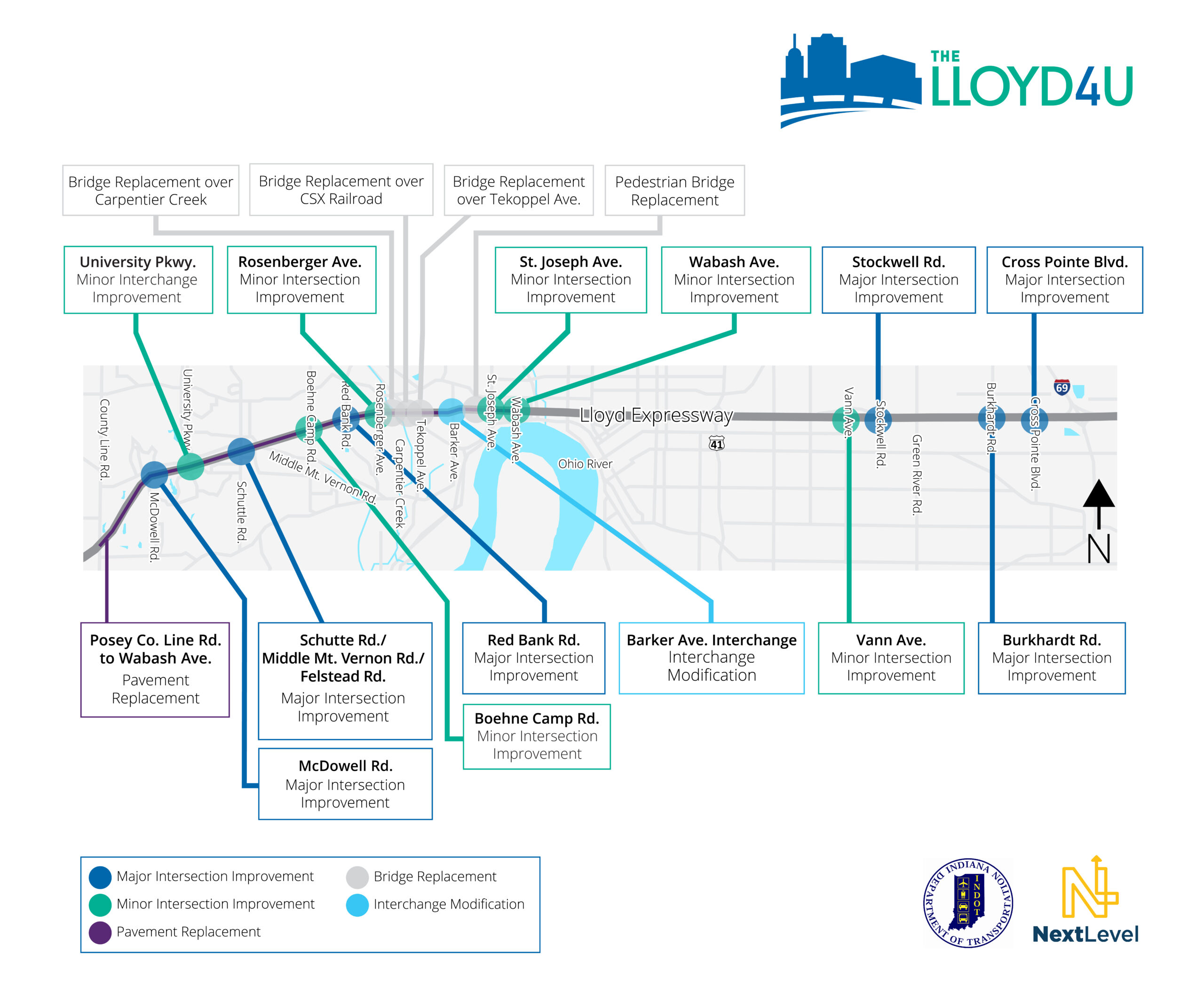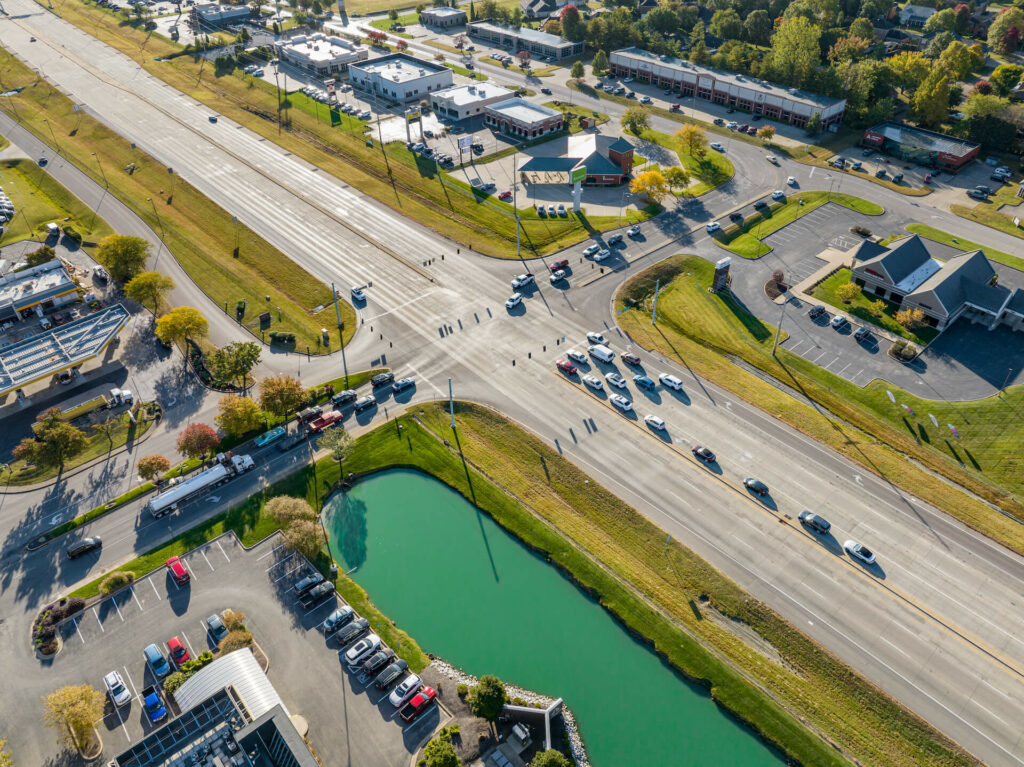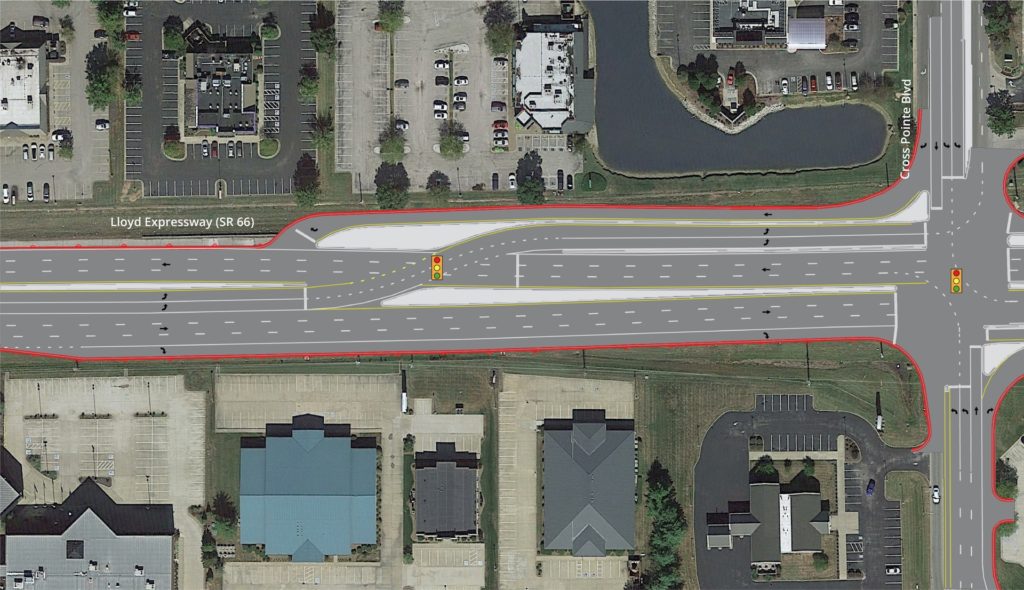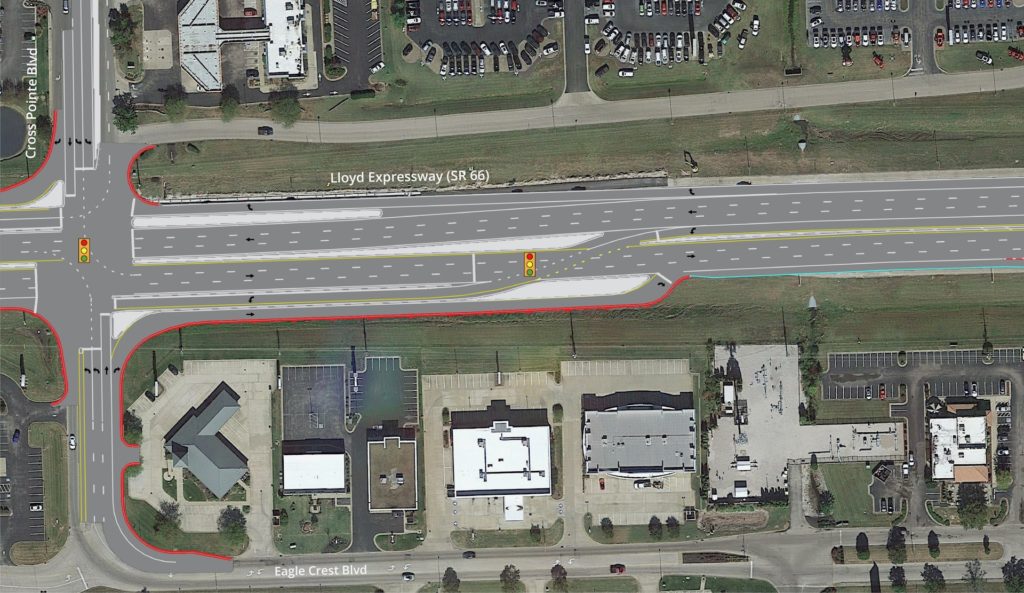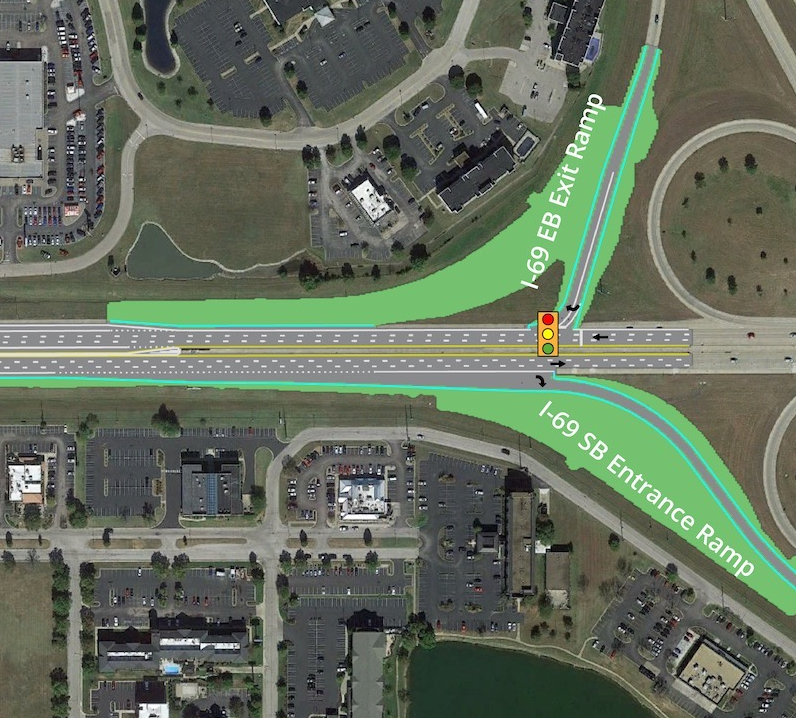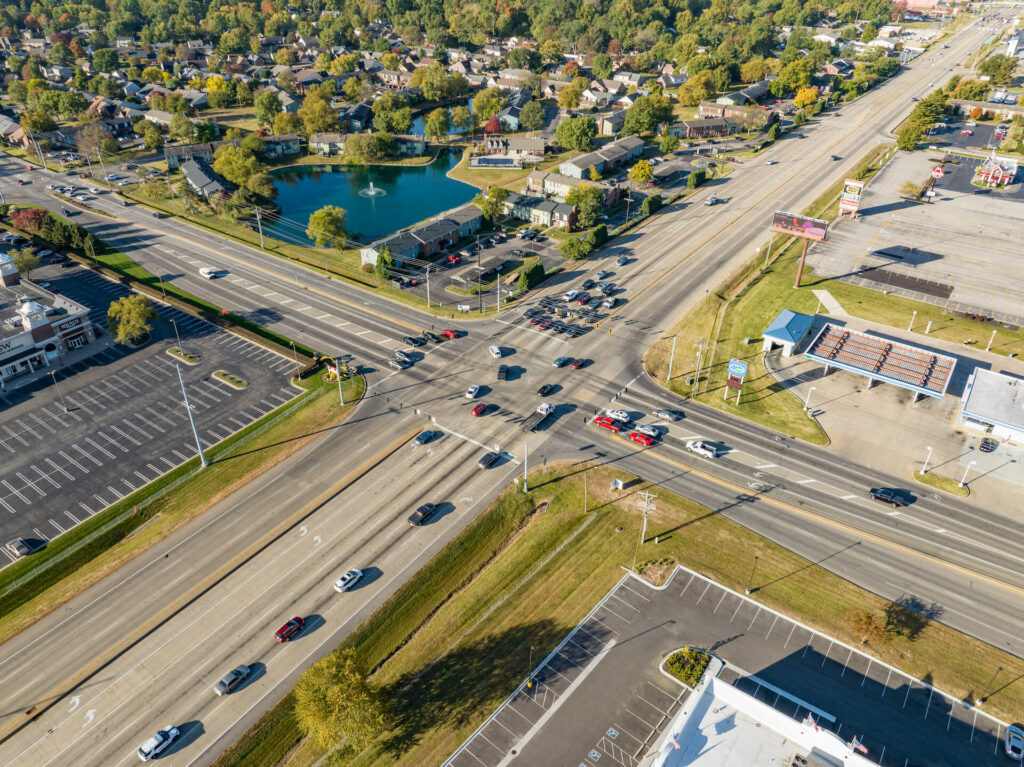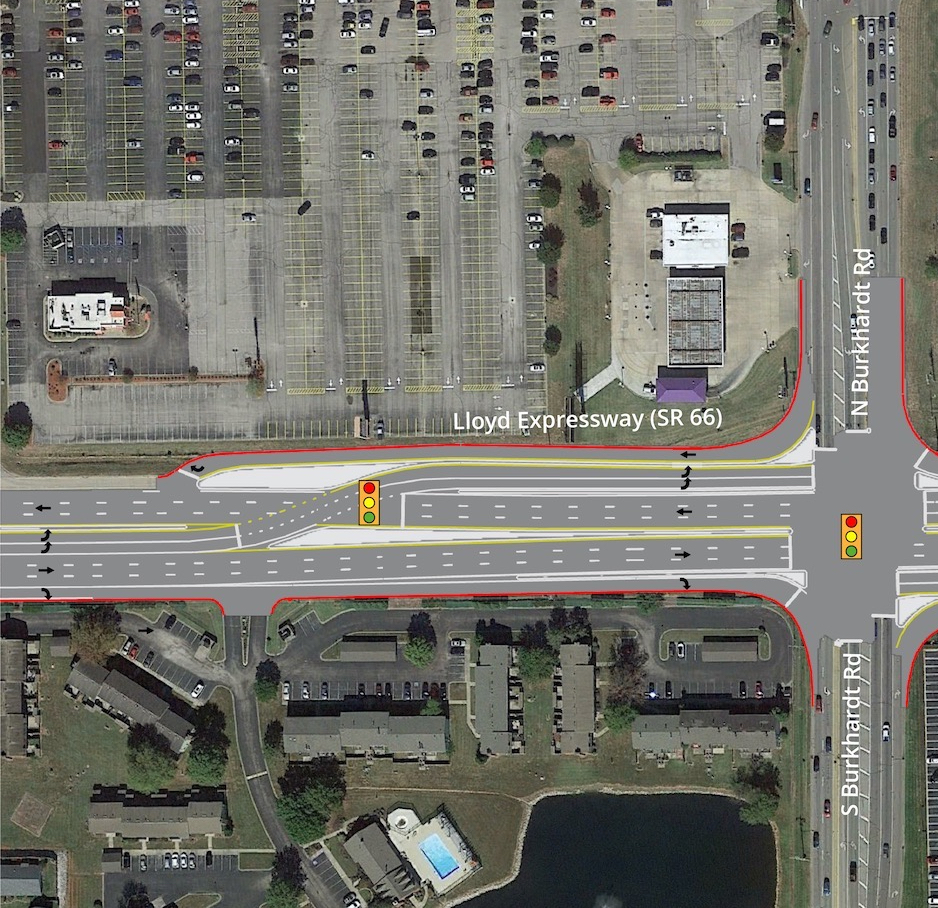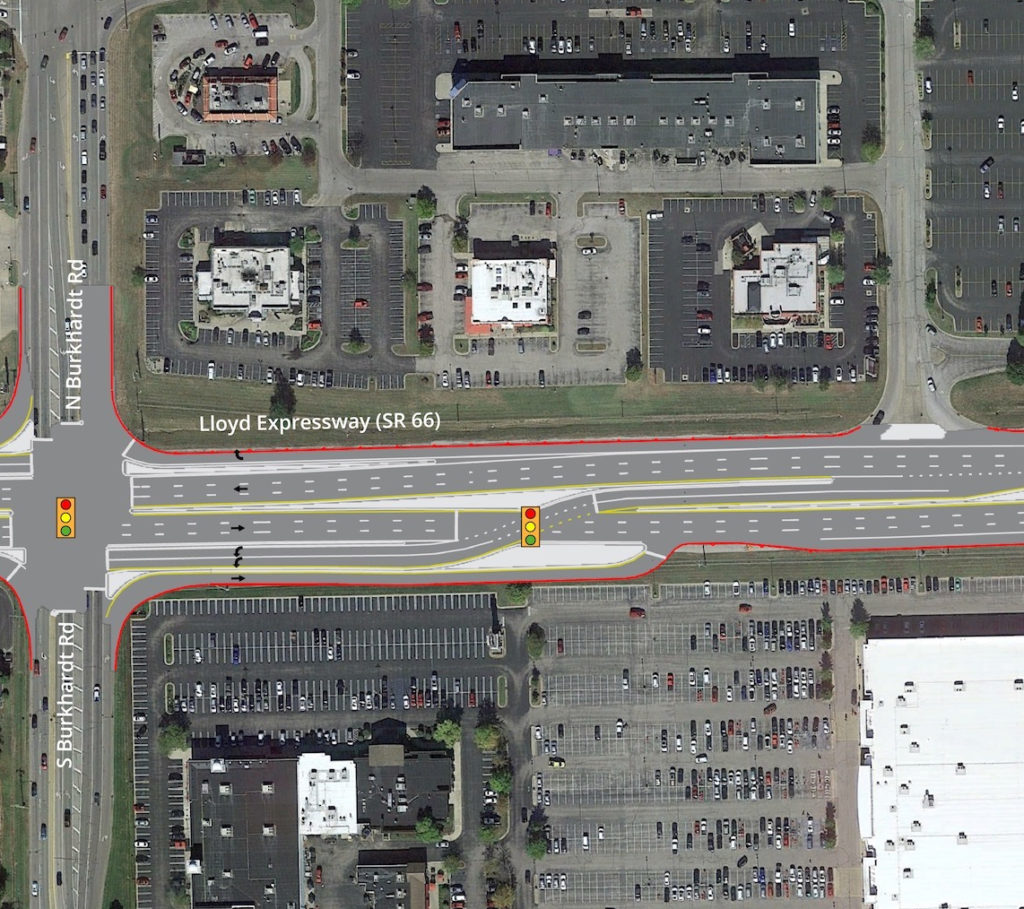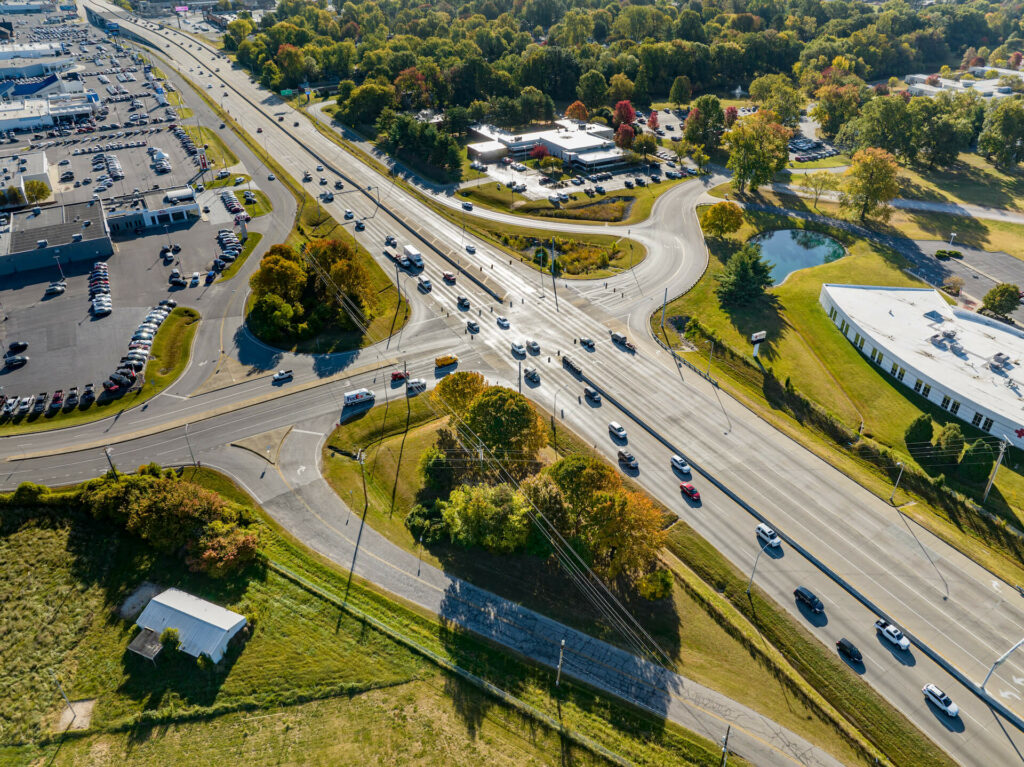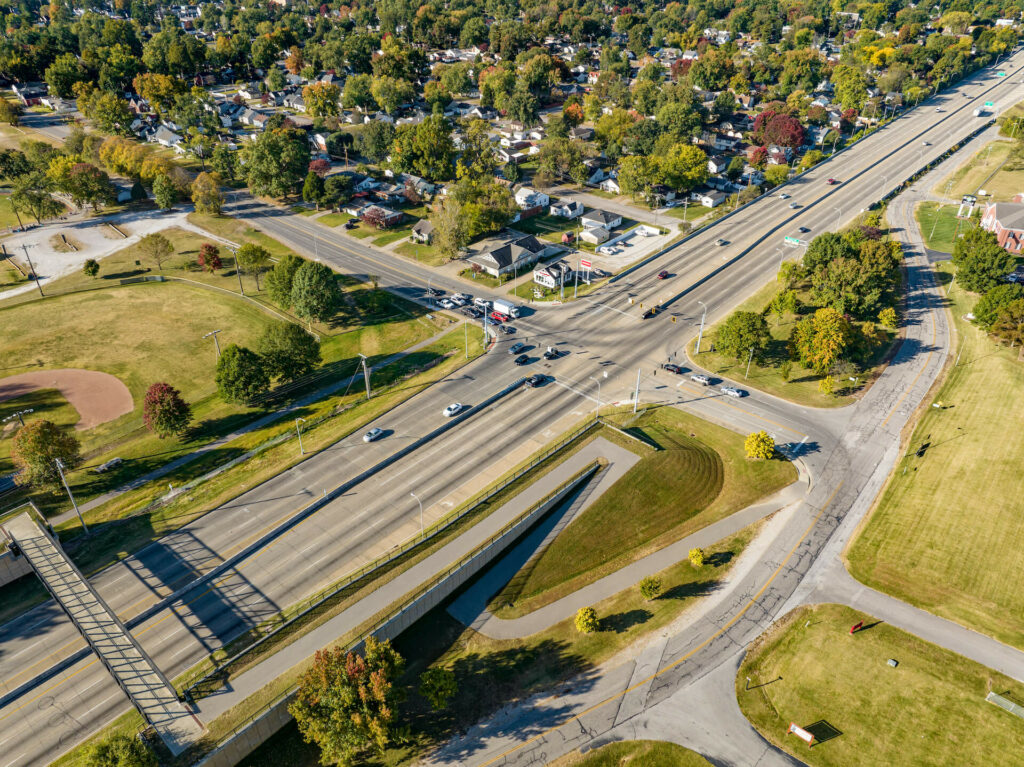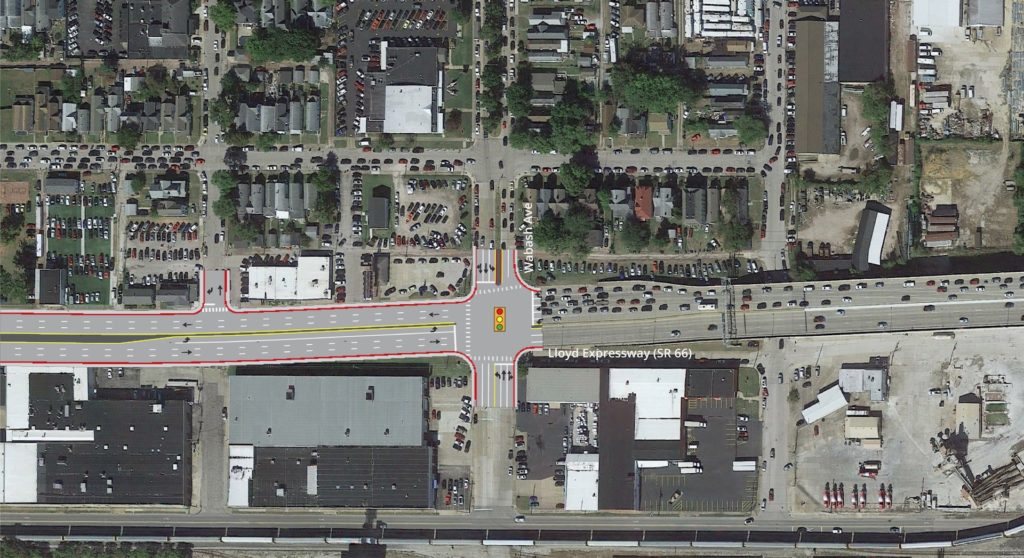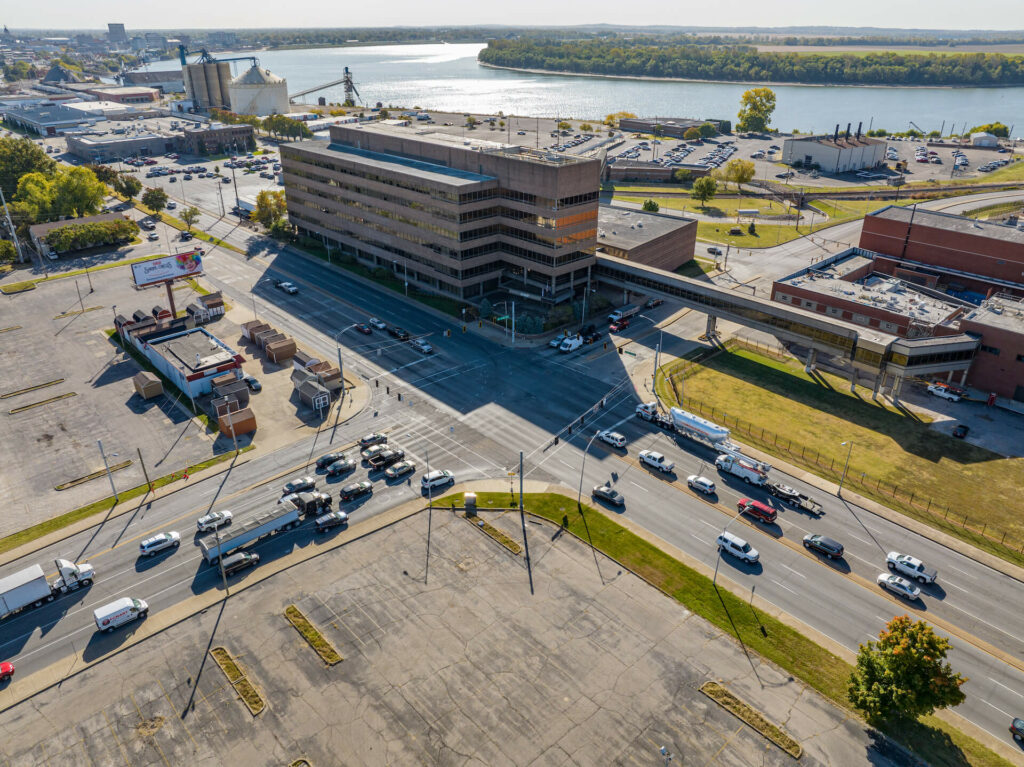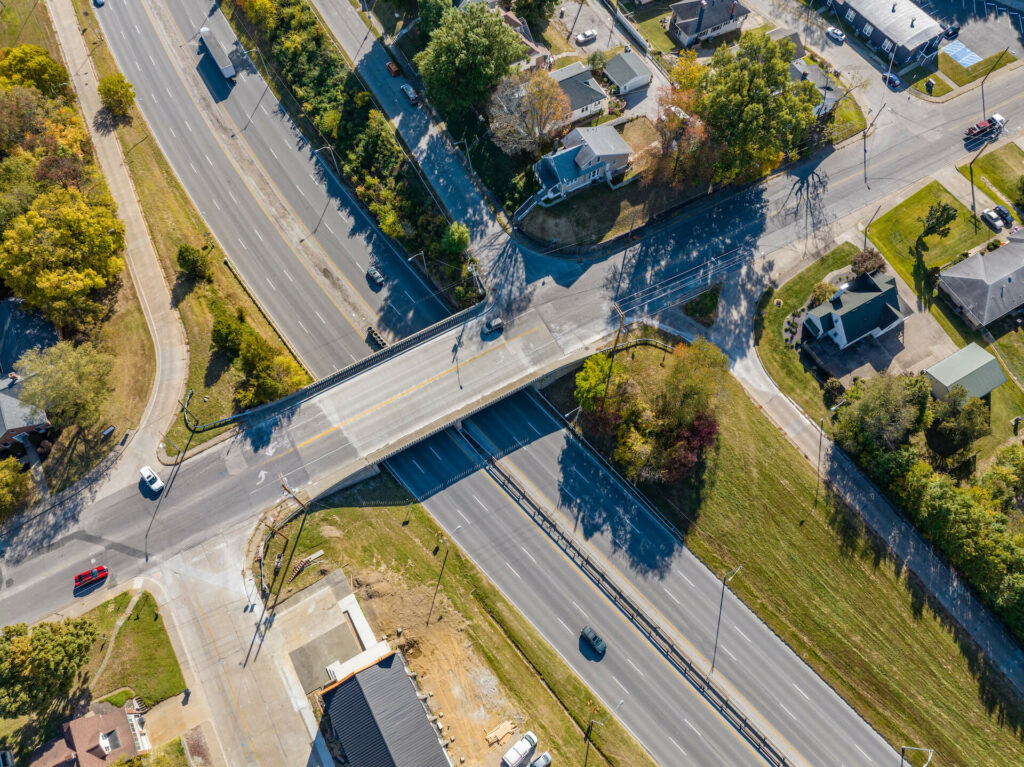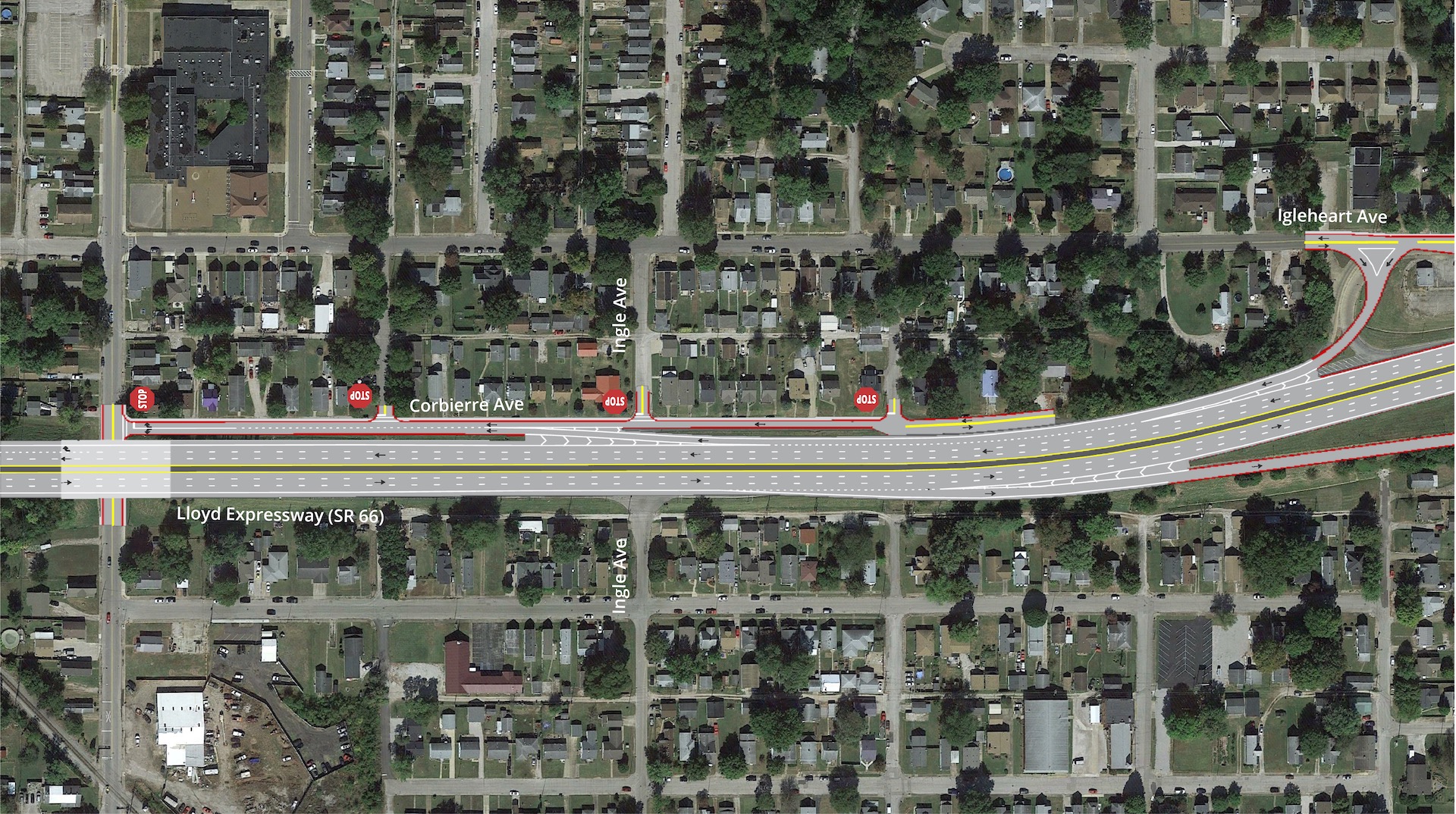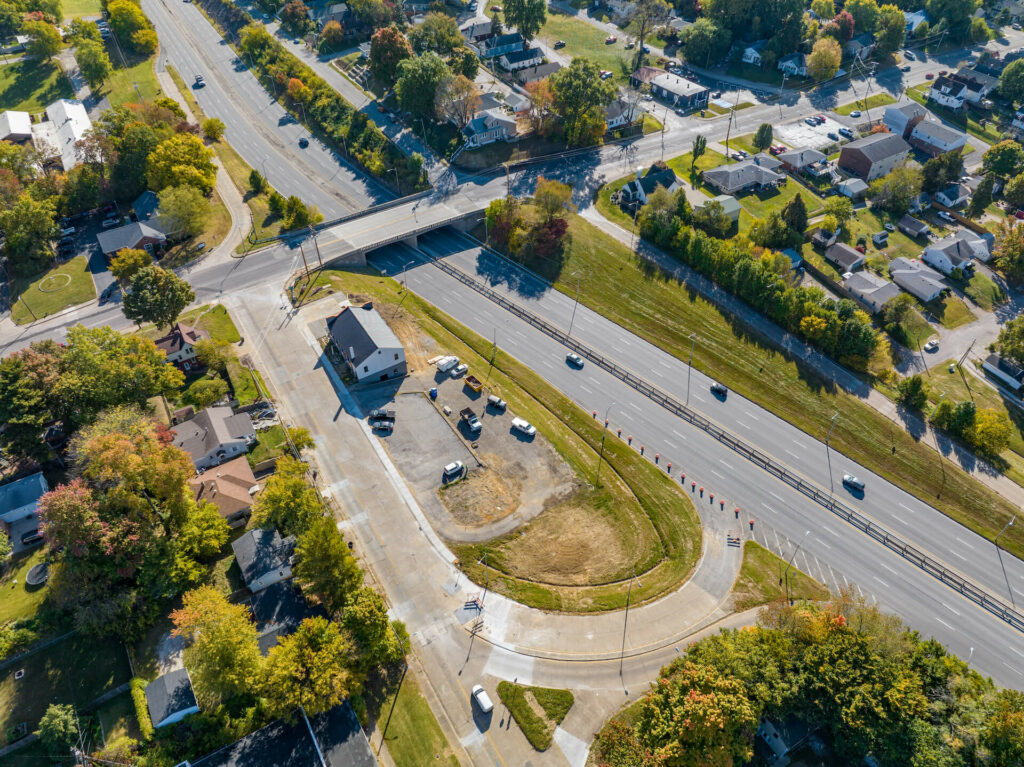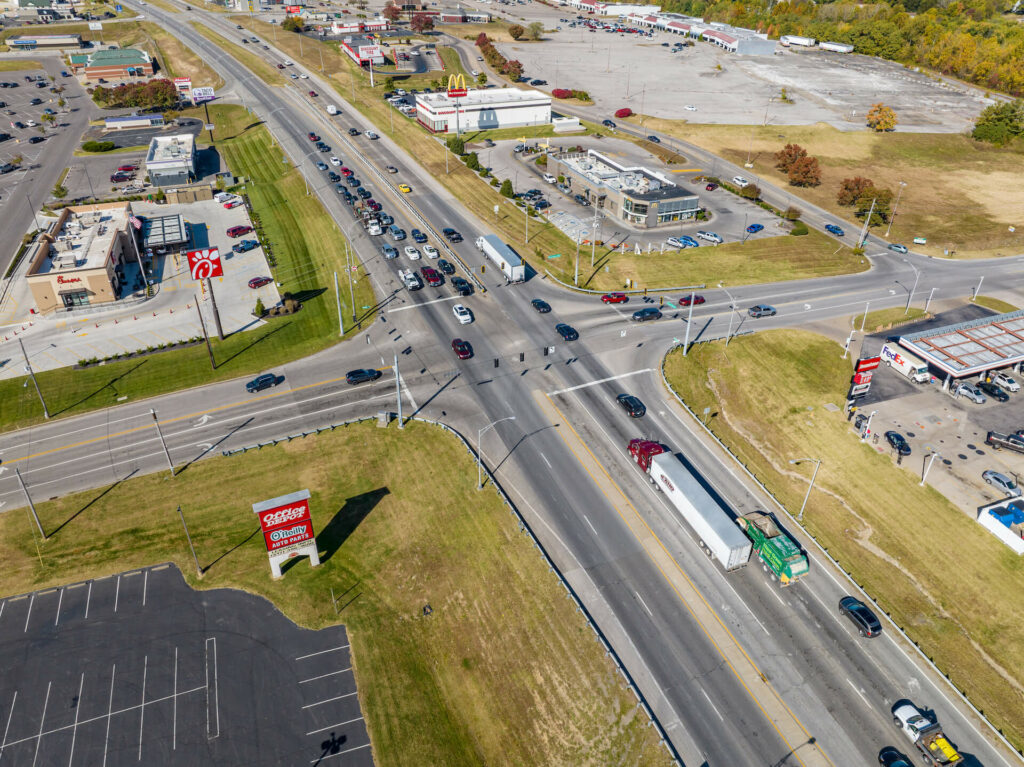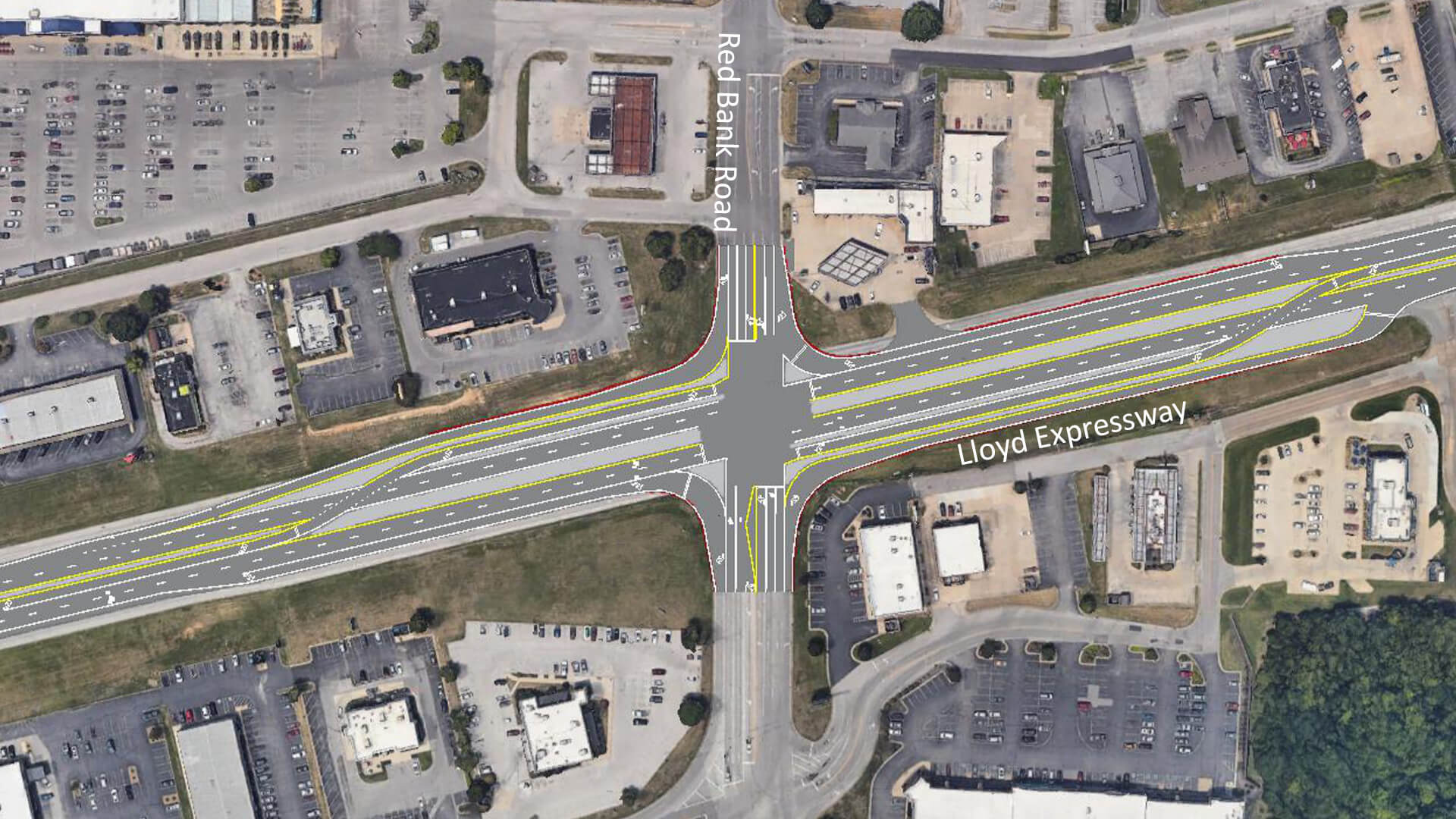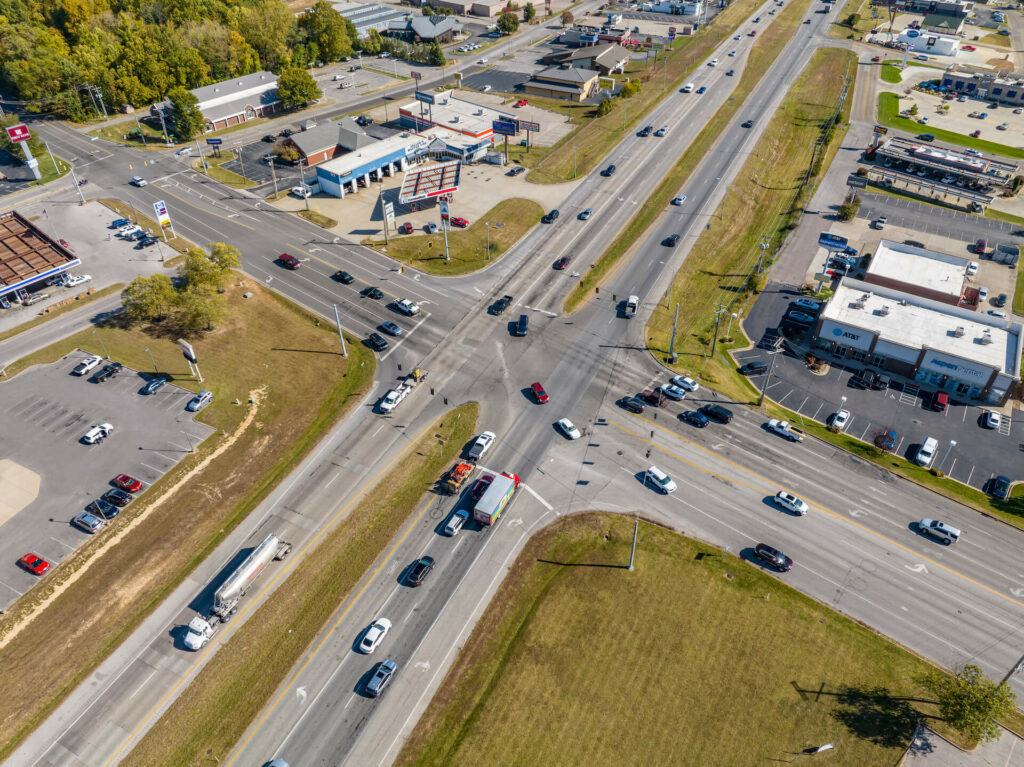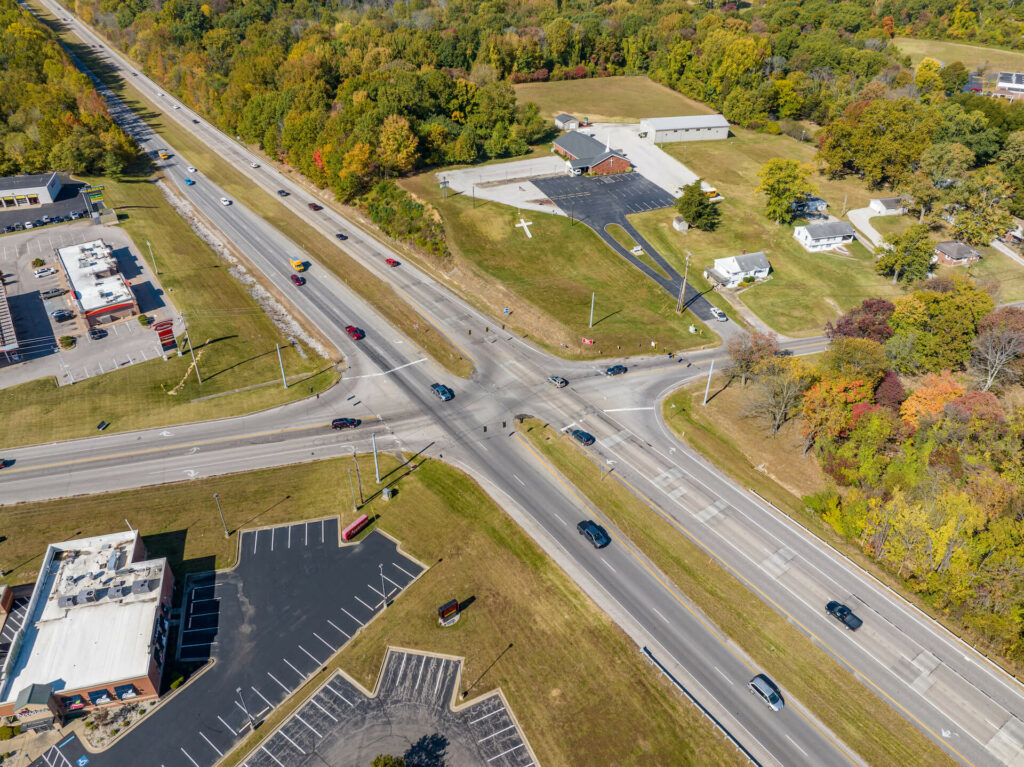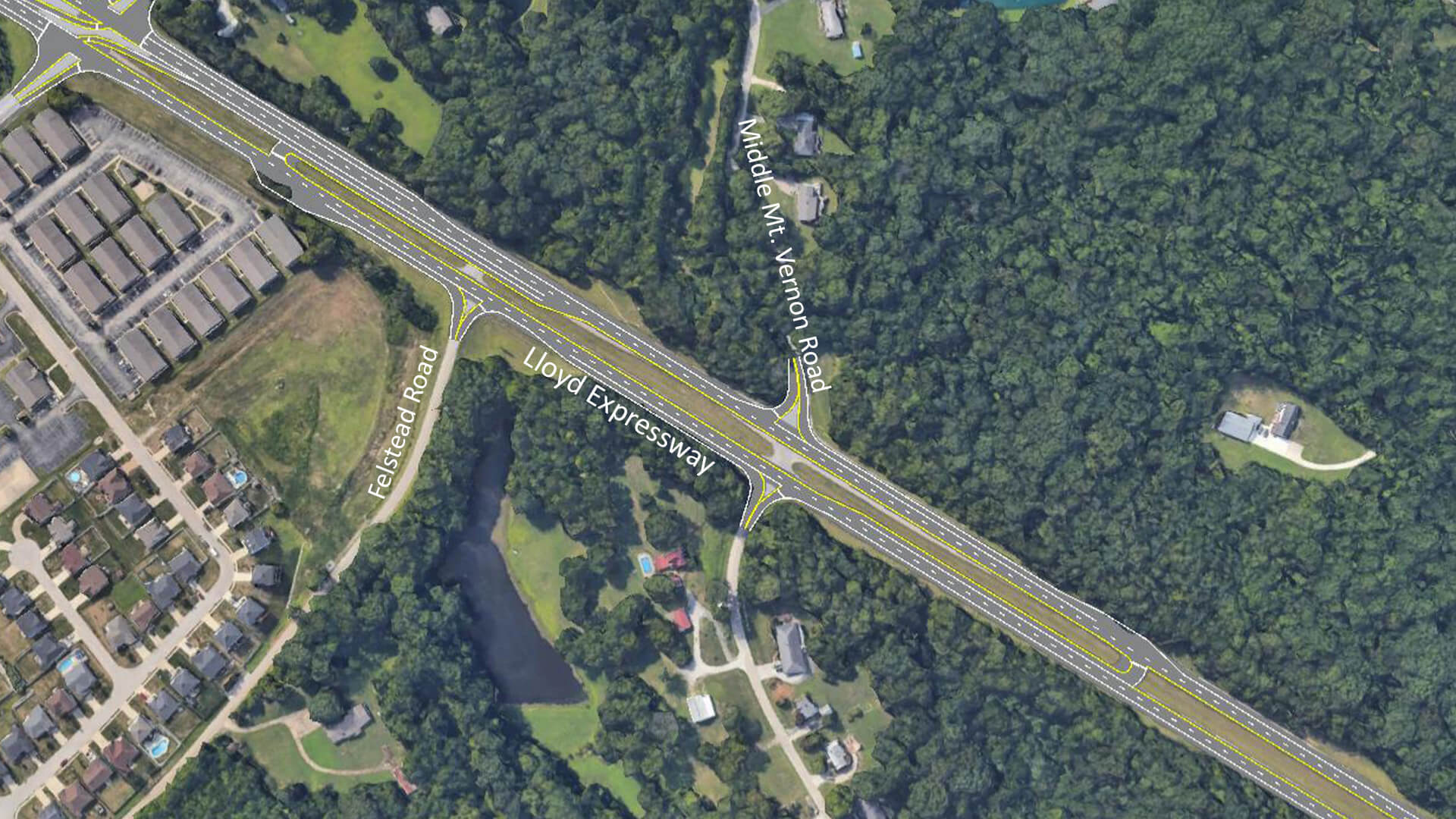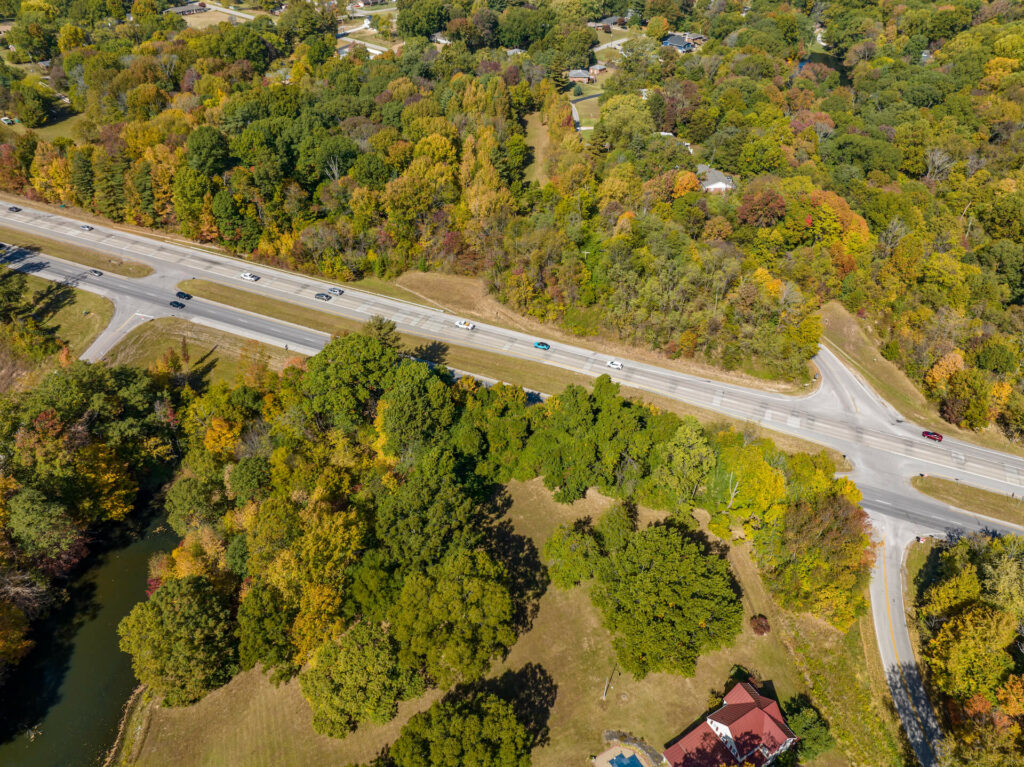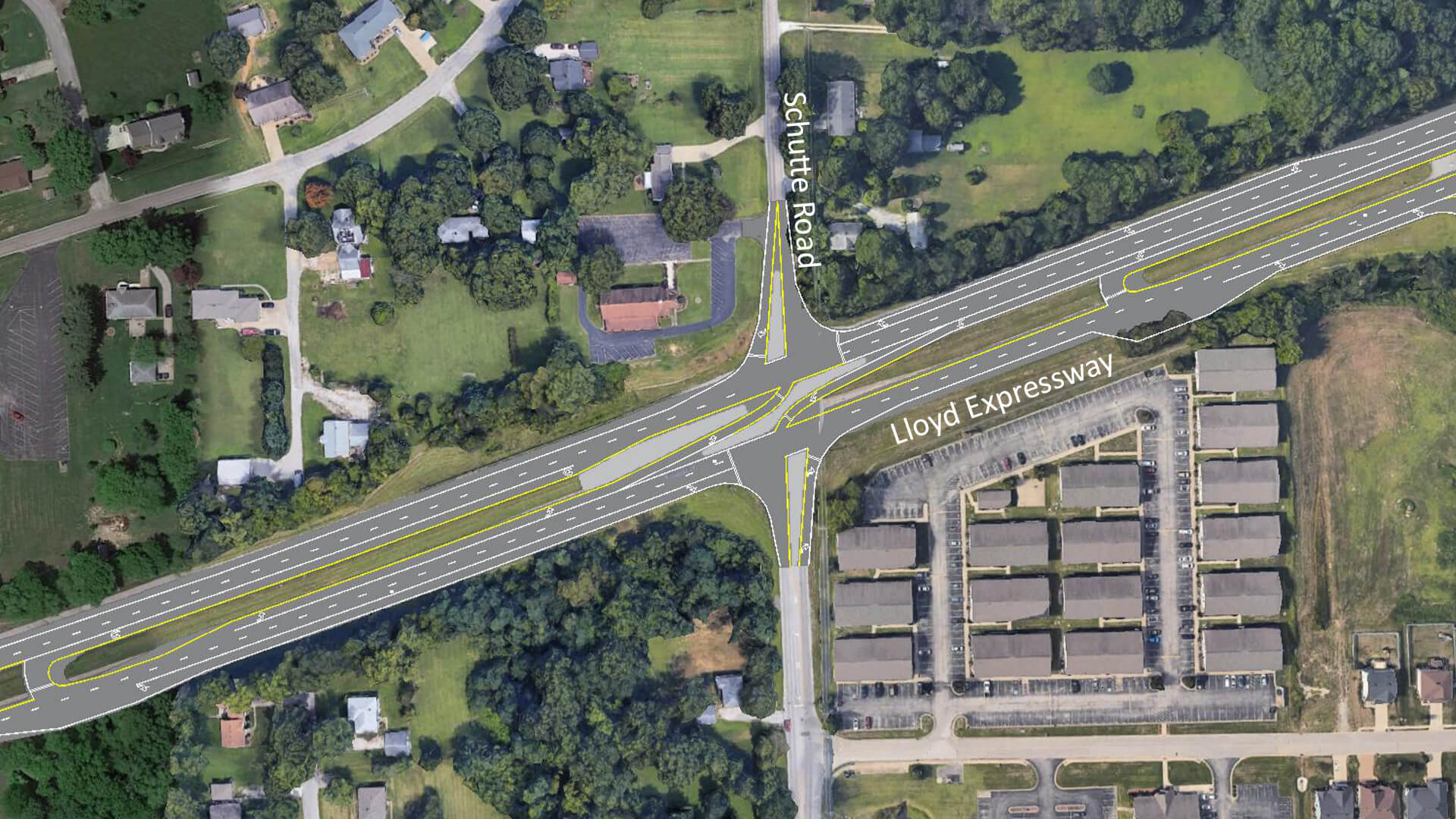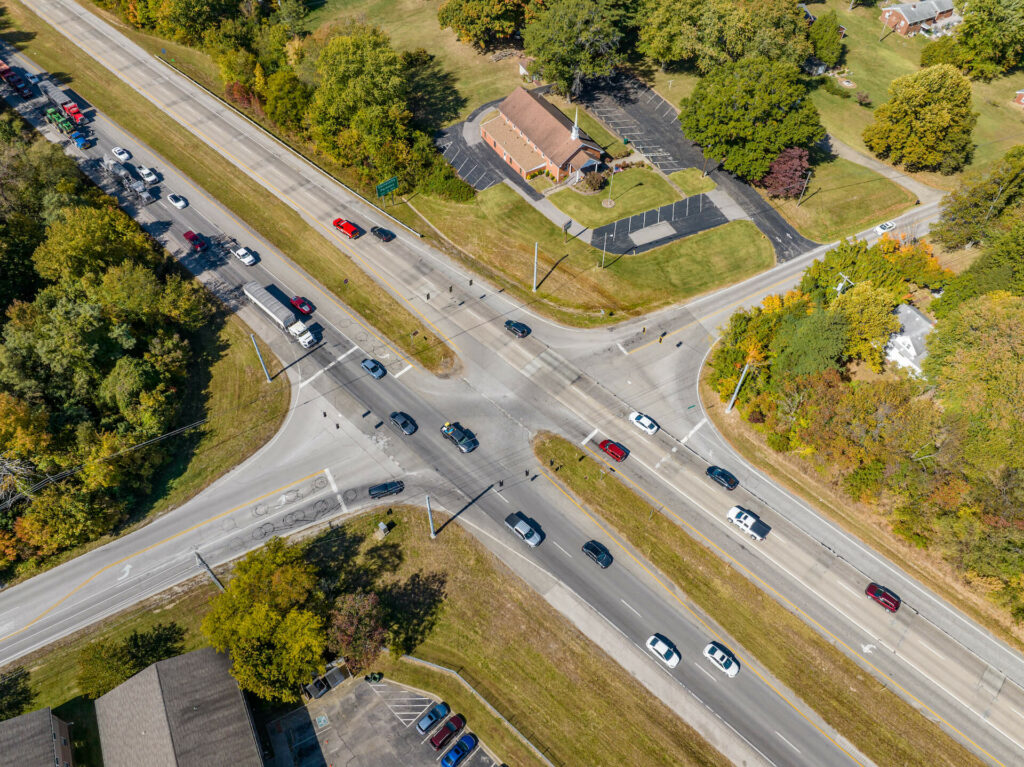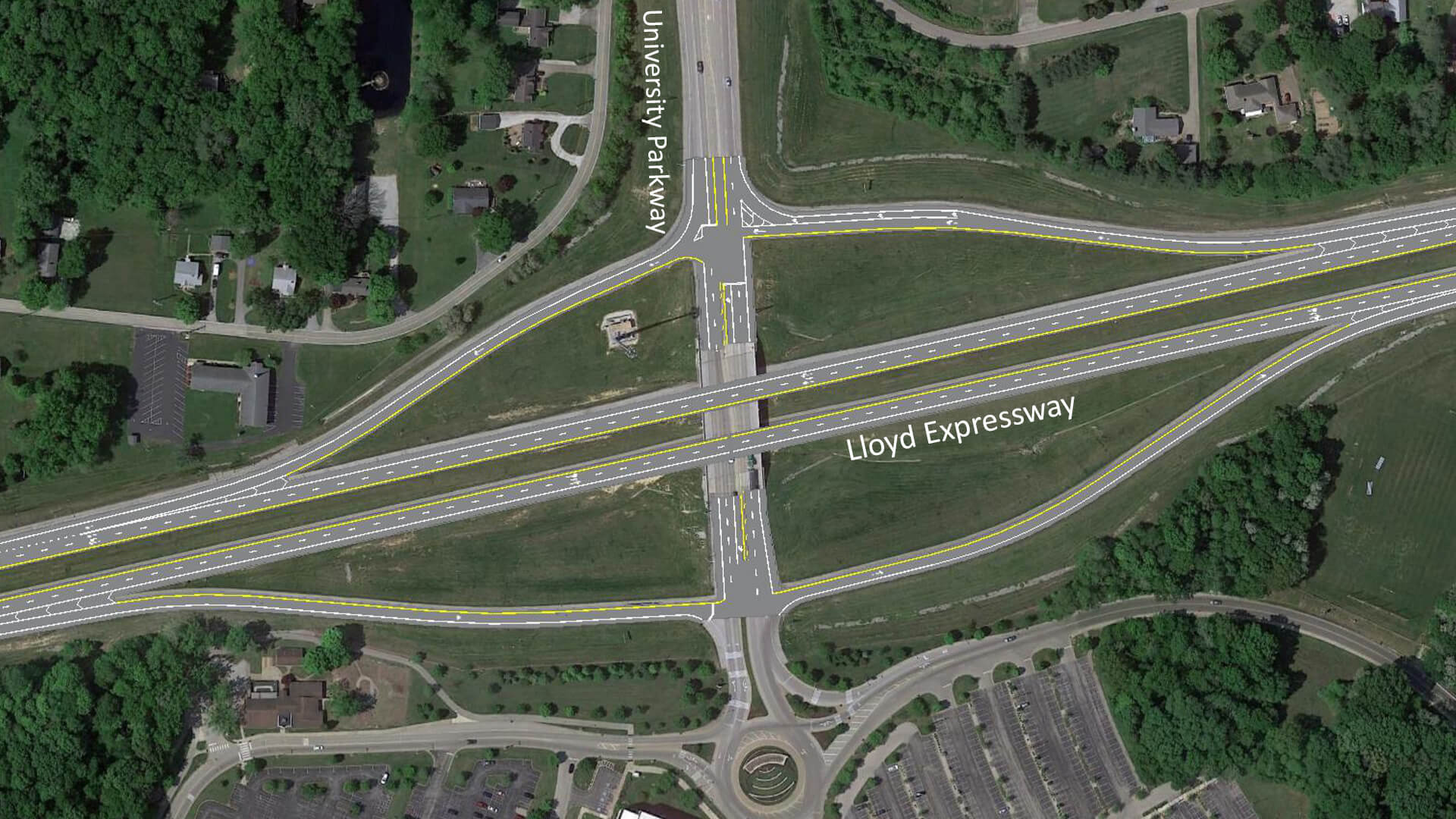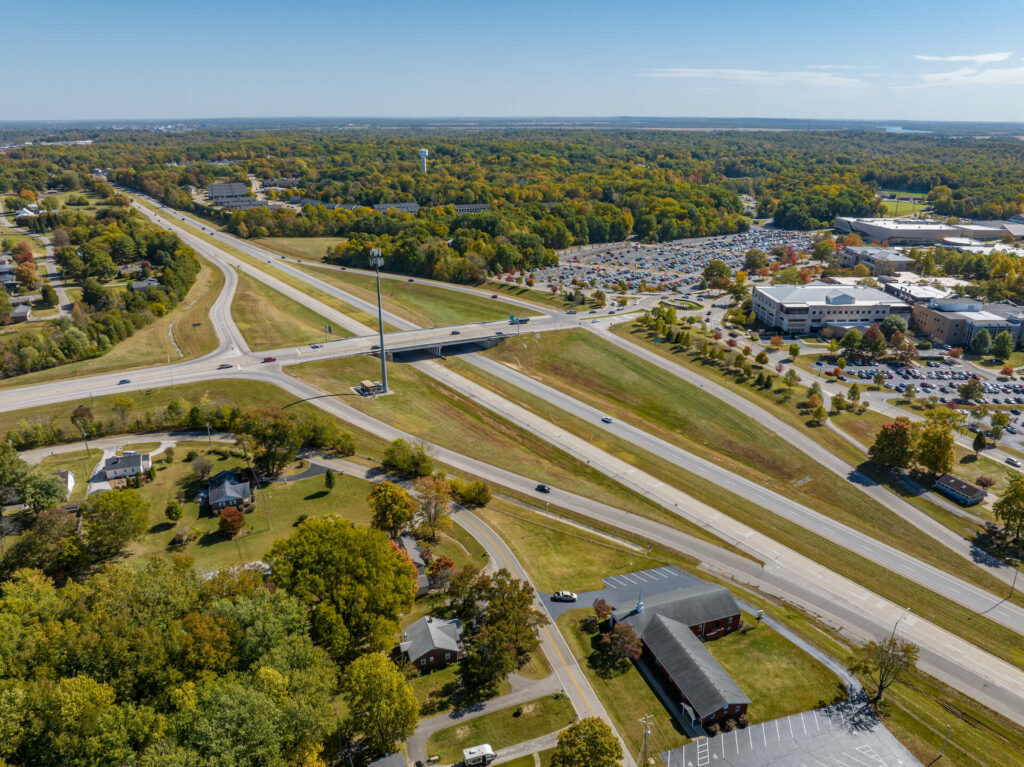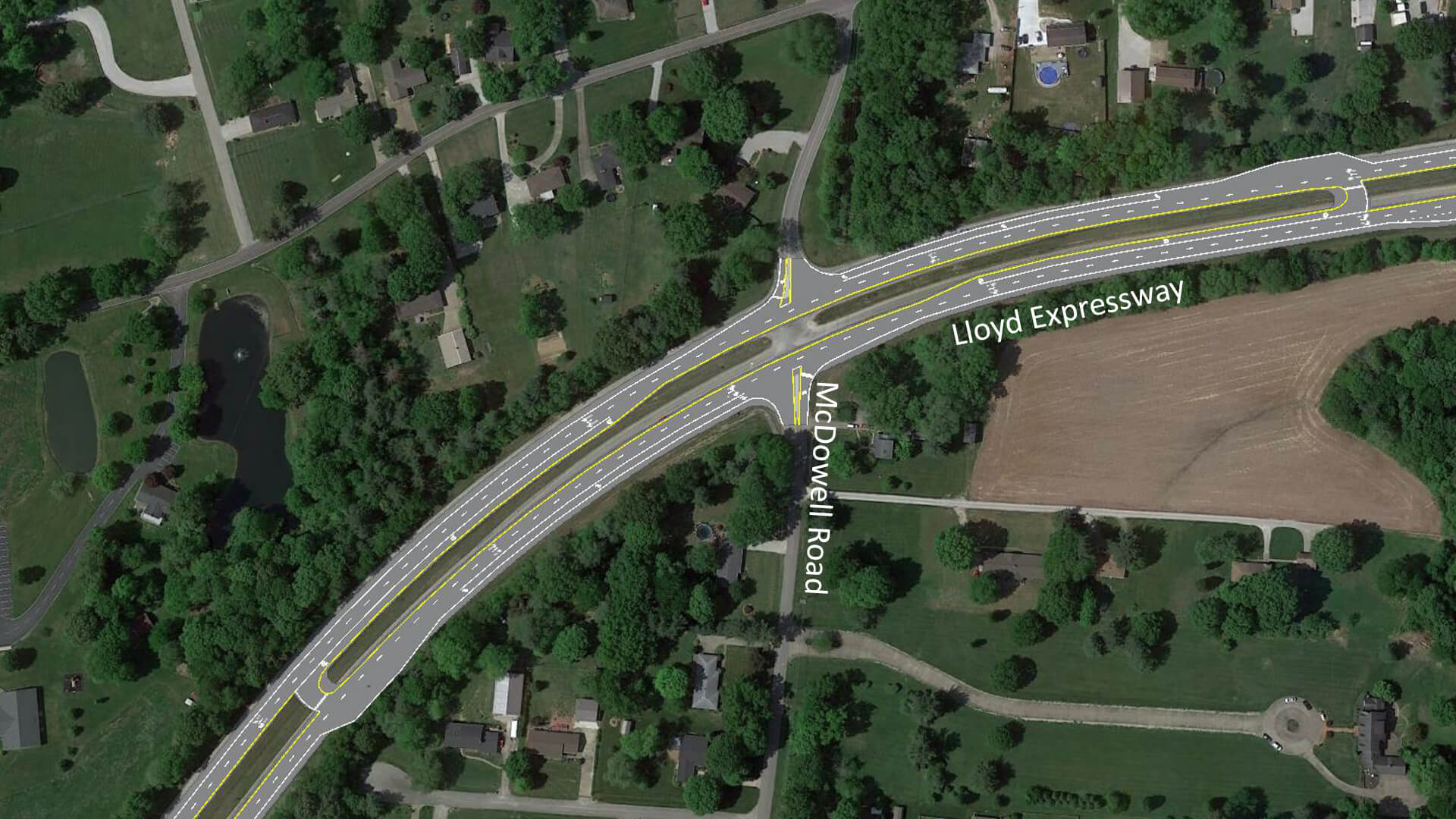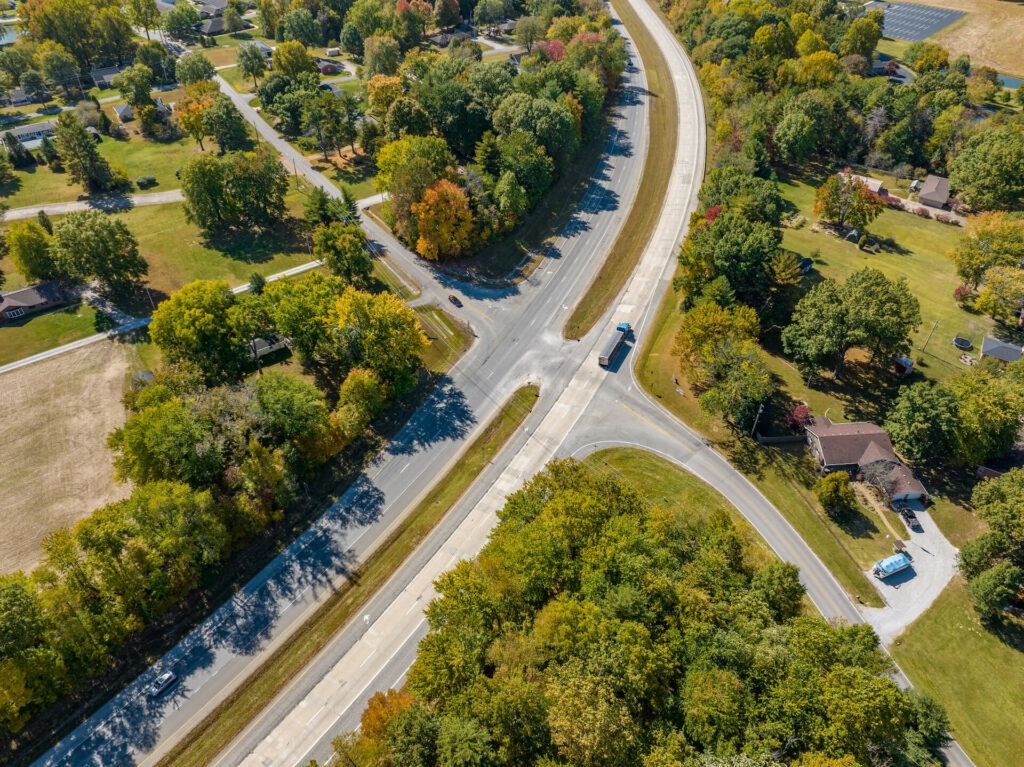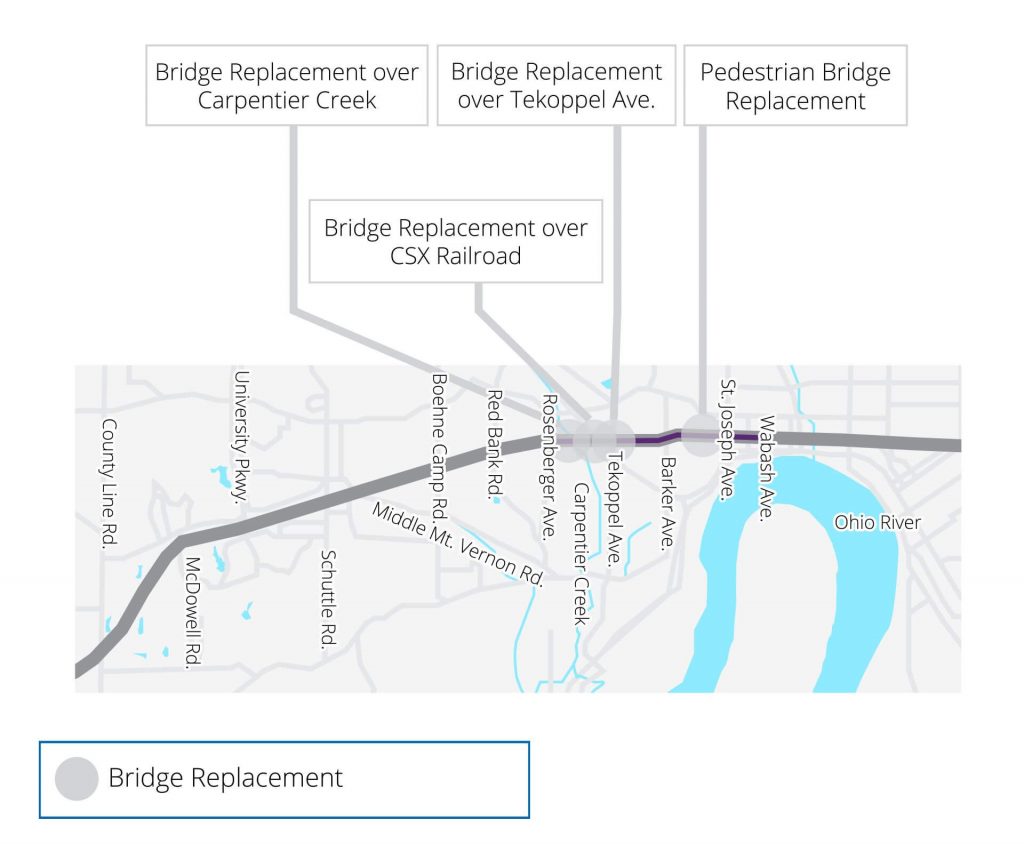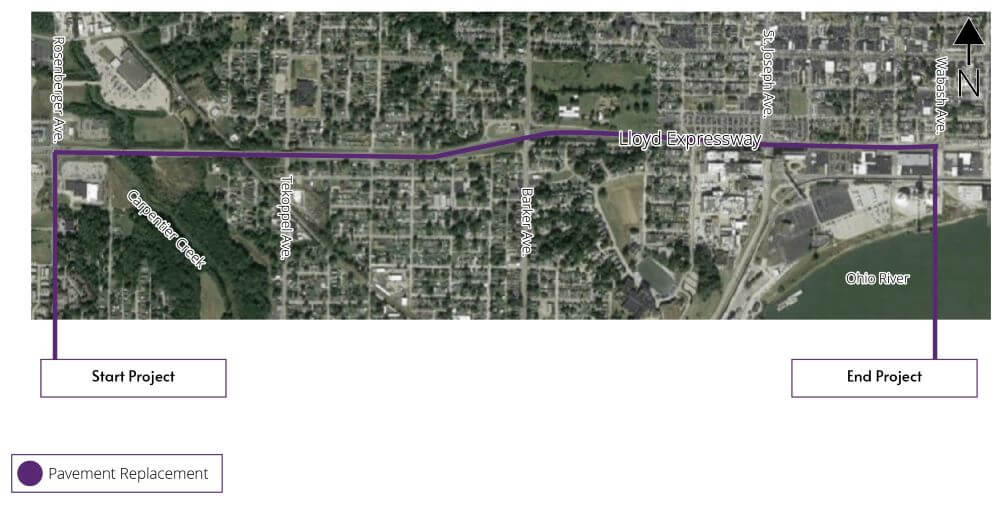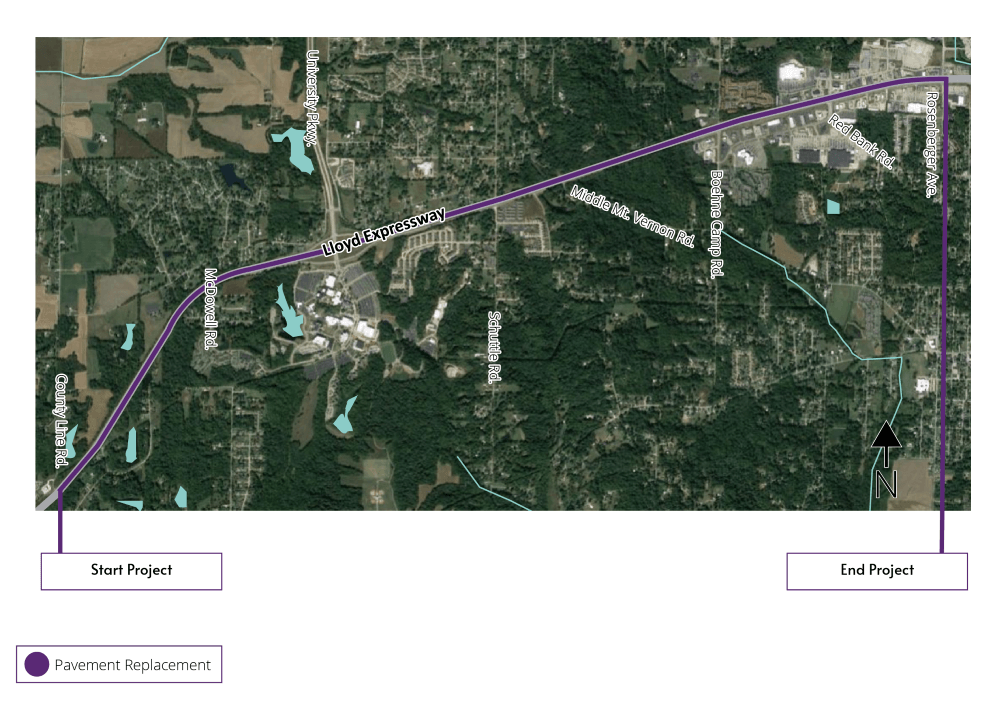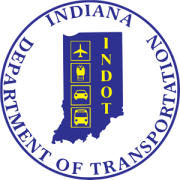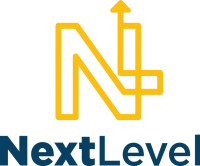Improvement Projects
Planned improvement projects are focused on making the Lloyd work for you. Alternative intersections will be used to improve safety and mobility while maintaining accessibility to businesses and homes along the Lloyd Expressway.
The idea is simple: organize traffic to improve flow and safety.
This is done by changing the way left turns are made.
Design concepts are preliminary and subject to change.
Displaced Left Turn
Vehicles turning left move to a dedicated lane on the other side of the road, with a signal, before they enter the intersection. There’s no need for a left turn signal at the intersection. Left-turn traffic moves with traffic on the Lloyd Expressway. This is also known as a continuous flow intersection.
Watch this excerpt from a Federal Highway Administration video to learn more:
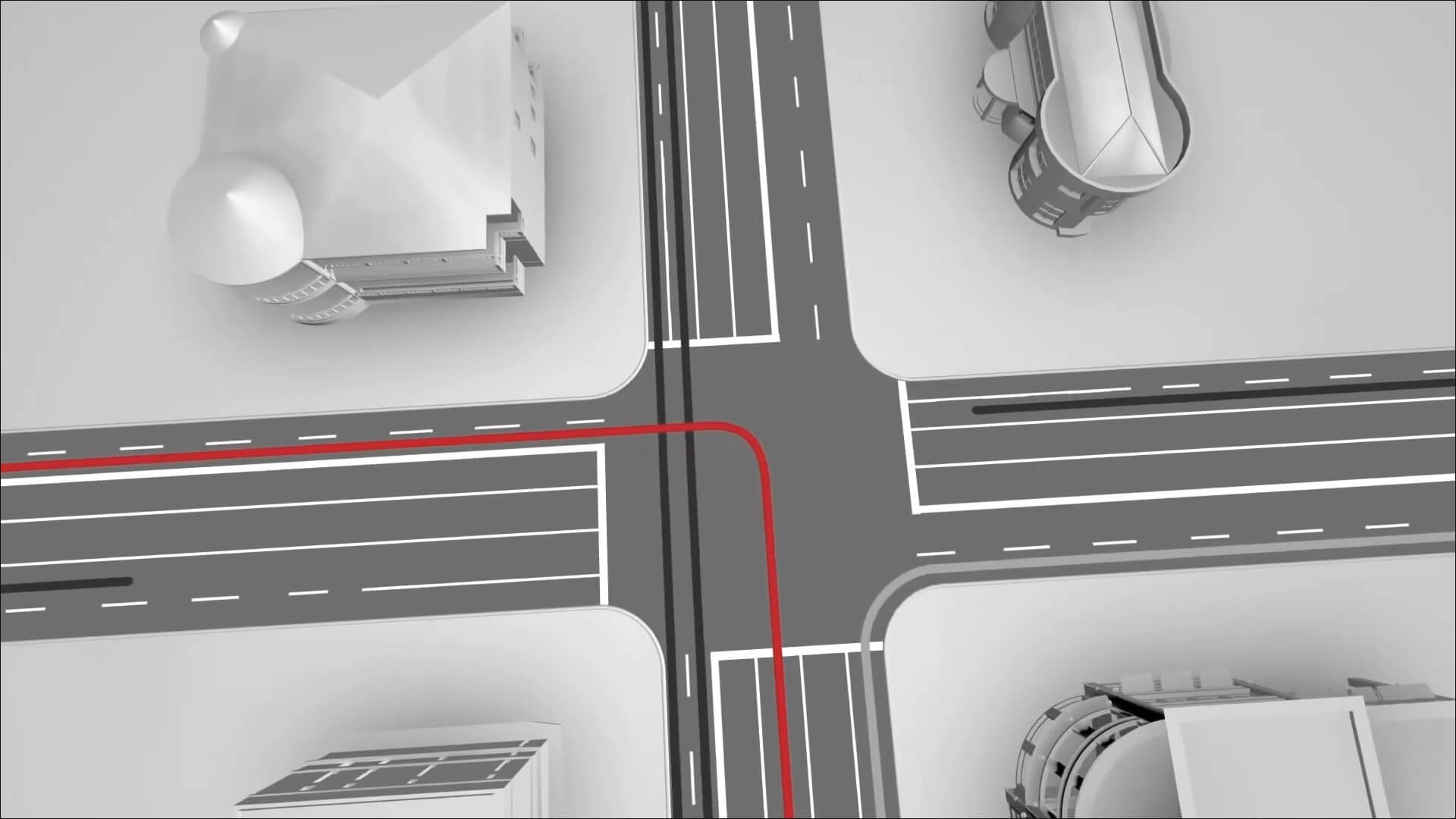
Boulevard Left Turn
Vehicles wanting to go left off the Lloyd go through the intersection, make a U-turn and then turn right. This removes left turns at the intersection. All boulevard left turns planned for TheLloyd4U include a traffic signal at a dedicated U-turn in the median to safely make the turn. This is also known as a median U-Turn.
Watch this excerpt from a Federal Highway Administration video to learn more:
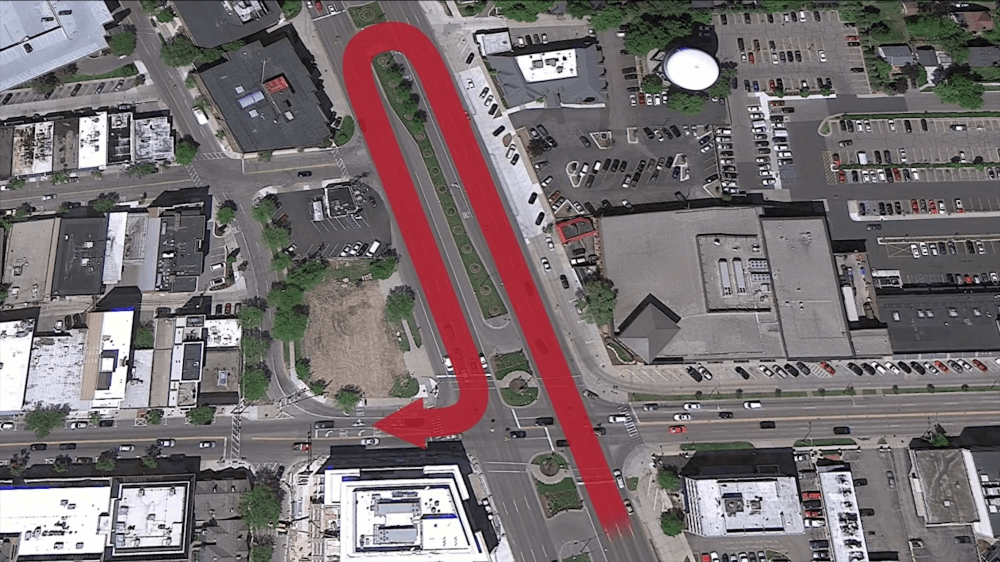
Hybrid Solution
This includes elements from both a displaced left turn and a boulevard left turn. An intersection’s proximity to ramps, roadways and other factors means a combination of elements from the two work best together to improve safety, performance and wait times.
Improvement Projects
Click on each improvement project to learn more. You can click any image to expand its size and zoom in for detailed viewing.
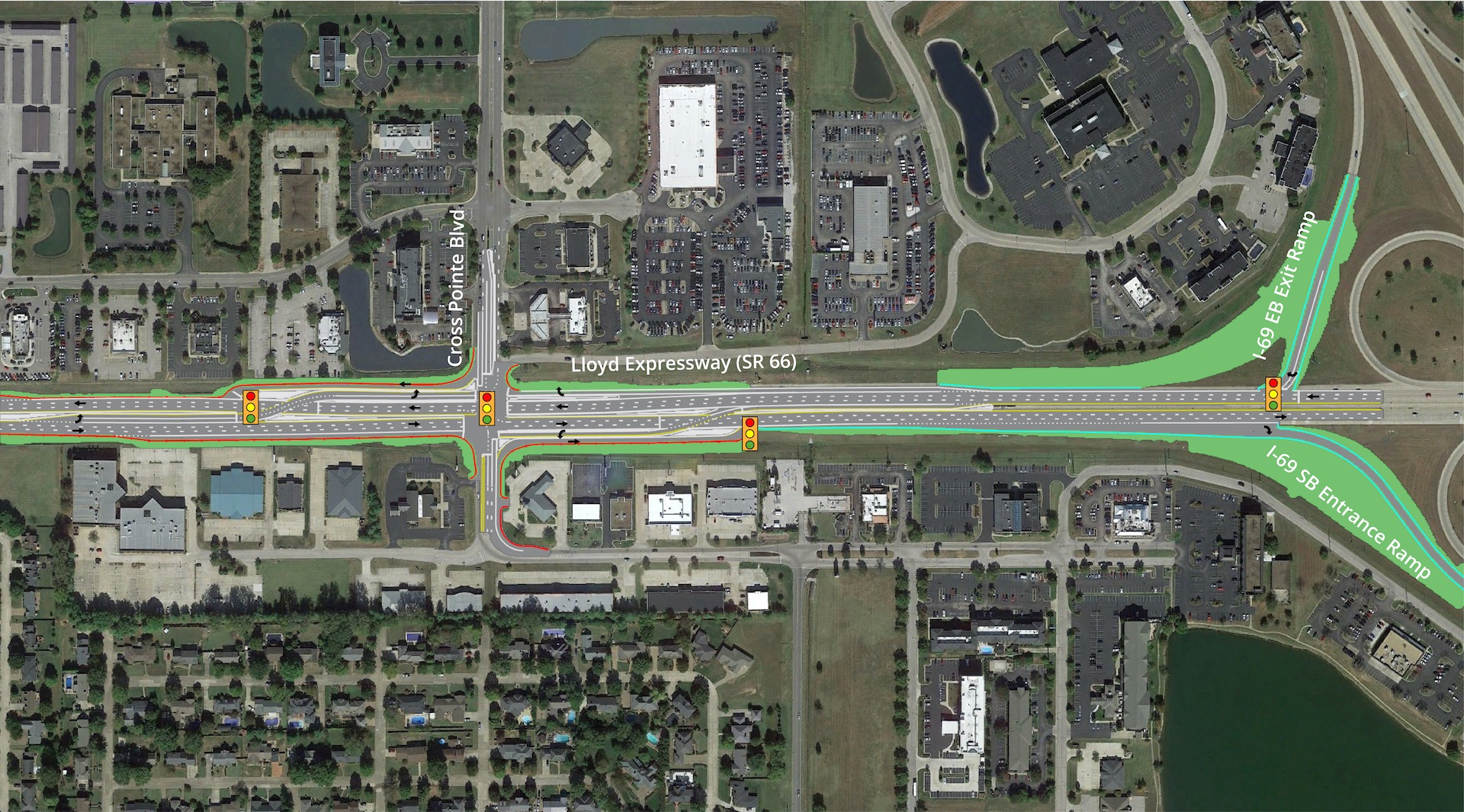
Major Intersection Improvement: Dual displaced left turns
- Dual displaced lefts with I-69 ramp modifications
Considerations:
- Proximity to I-69 ramps
- Peak time delays, especially northbound and southbound
- High crash rates
- Heavy commercial corridor
These design concepts are preliminary and subject to change.
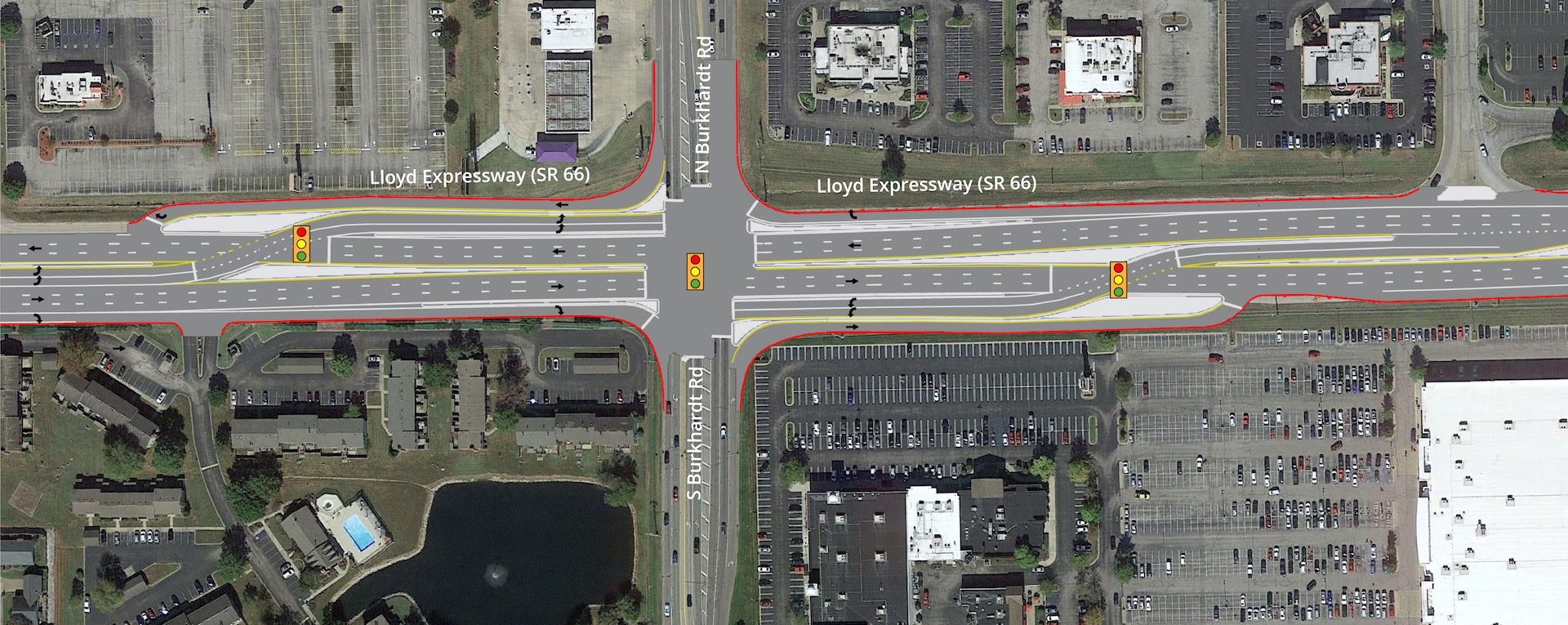
Major Intersection improvement: Dual displaced left turns
Considerations:
- Peak time delays, especially northbound and southbound
- Traffic backing up, especially southbound Burkhardt
- Heavy commercial corridor
This design concept is preliminary and subject to change.
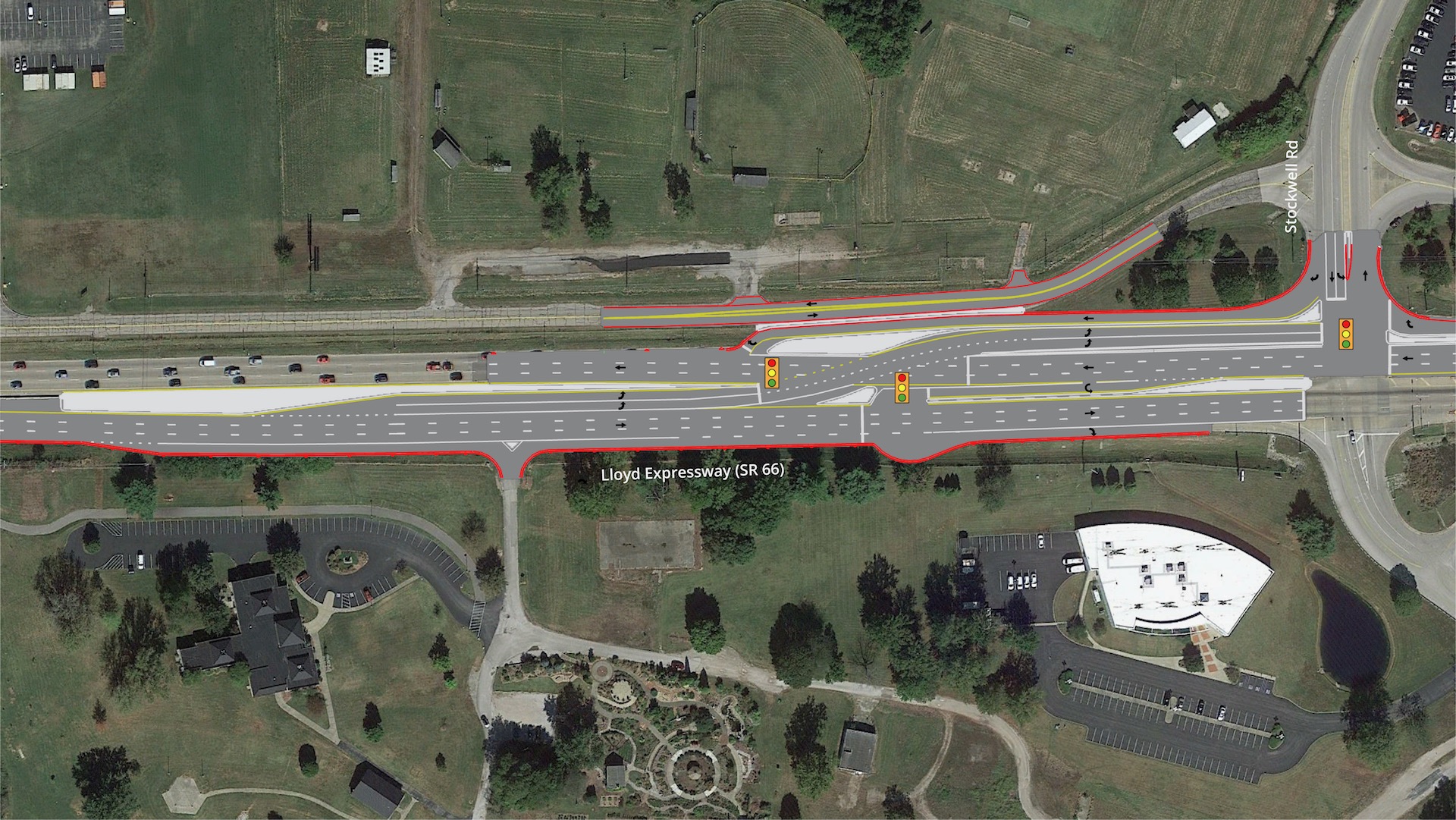
Major Intersection Improvement: Hybrid solution with eastbound displaced left turn and westbound boulevard left turn
Considerations:
- Proximity to Green River Road ramps results in a hybrid solution
- Proximity to John Street also supports hybrid solution
- Afternoon/evening peak delays in all directions
This design concept is preliminary and subject to change.
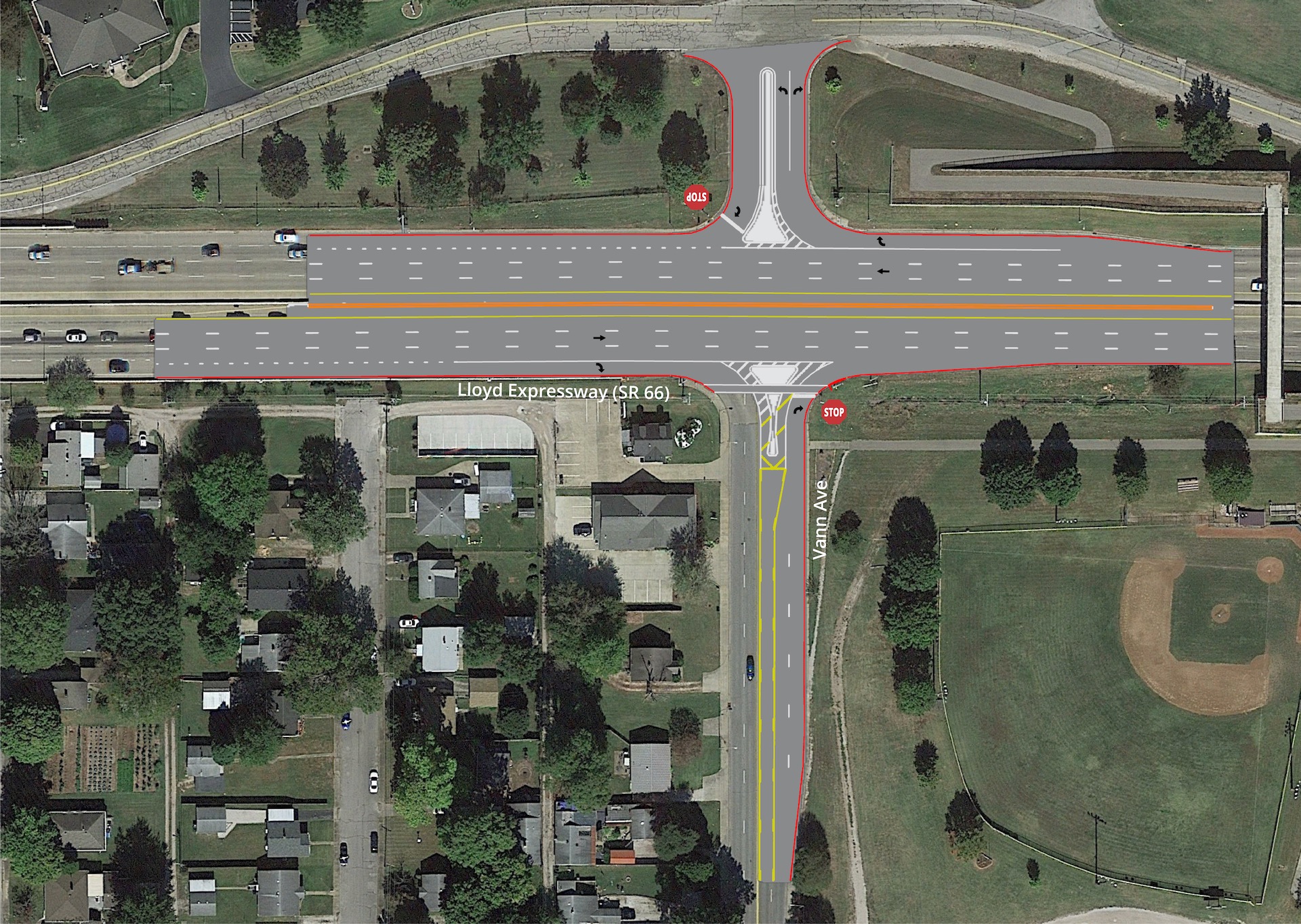
Minor Intersection Improvement: Right-in, right-out (restricted turn movements)
Considerations:
- High number of rear-end crashes on eastbound Lloyd (Boeke overpass)
- Boeke overpass site distance
- Restricted left-turn movement will not overload nearby intersections
- Maintains pedestrian movements
This design concept is preliminary and subject to change.
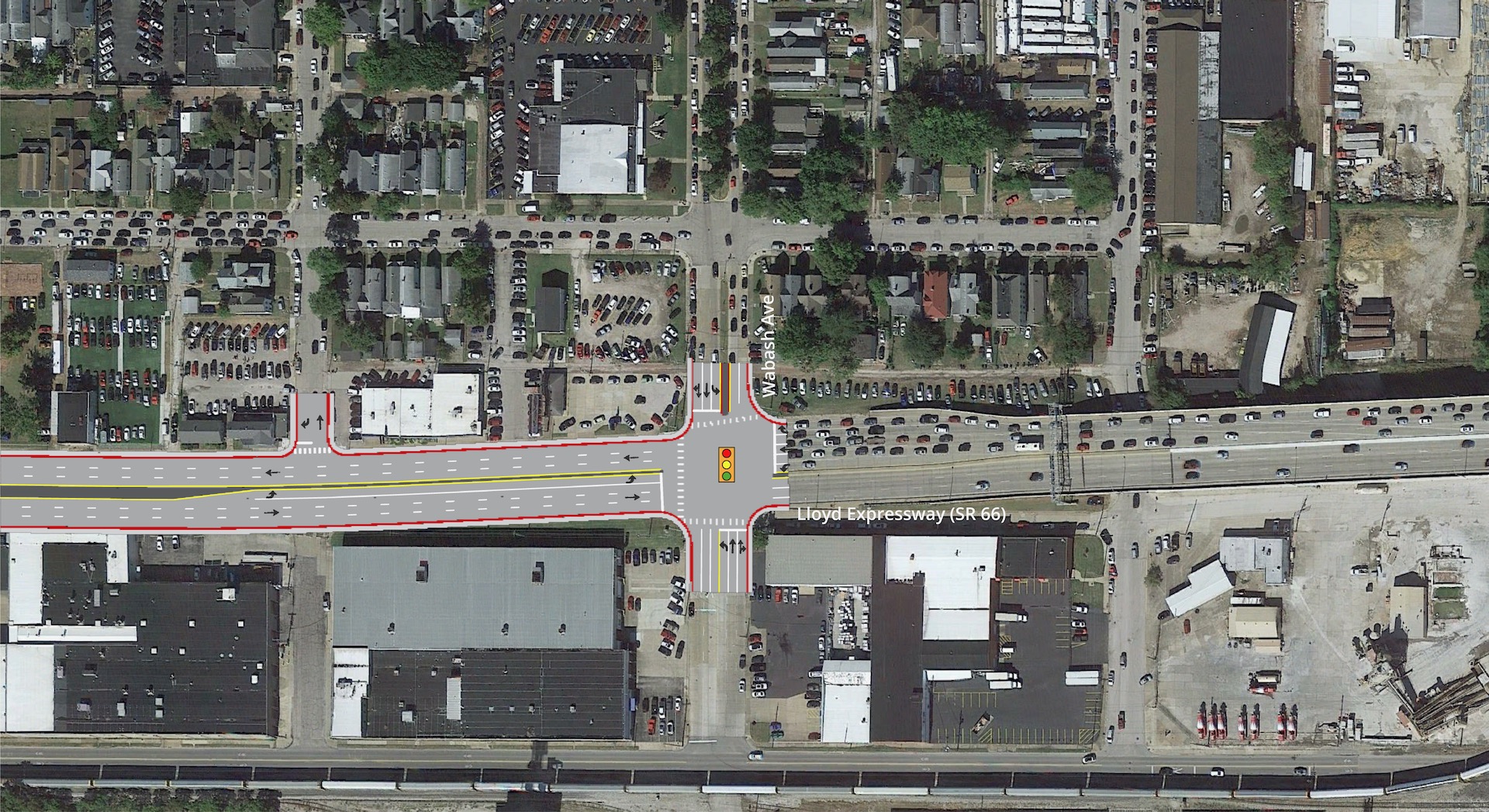
Minor Intersection Improvement:
- Improve and update signal timing and coordination with St. Joseph Avenue
- Close access to Pennsylvania Street
Considerations:
- High number of westbound rear-end crashes
- Westbound sight distance/Pigeon Creek Bridge
- Left turn movement blocking through lane
This design concept is preliminary and subject to change.
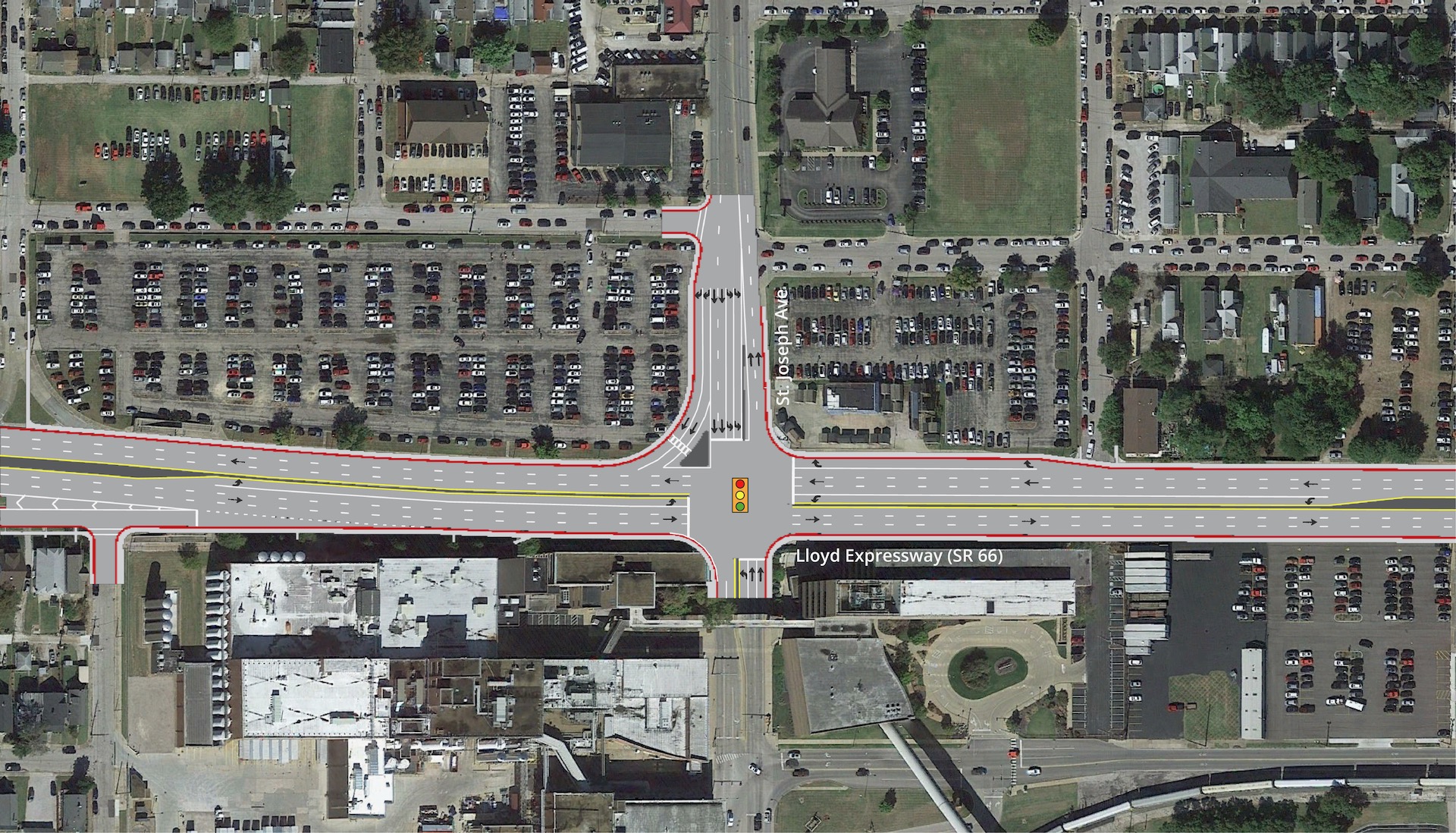
Minor Intersection Improvement:
- Reconfigure southbound approach
- Realign southbound left turn lanes
- Improve signal timing and coordination with Wabash Avenue
Considerations:
- Commercial and industrial corridor
- Significant amount of truck traffic
- Southbound to eastbound is the main turning movement
- Maintains dual lane through movement
This design concept is preliminary and subject to change.
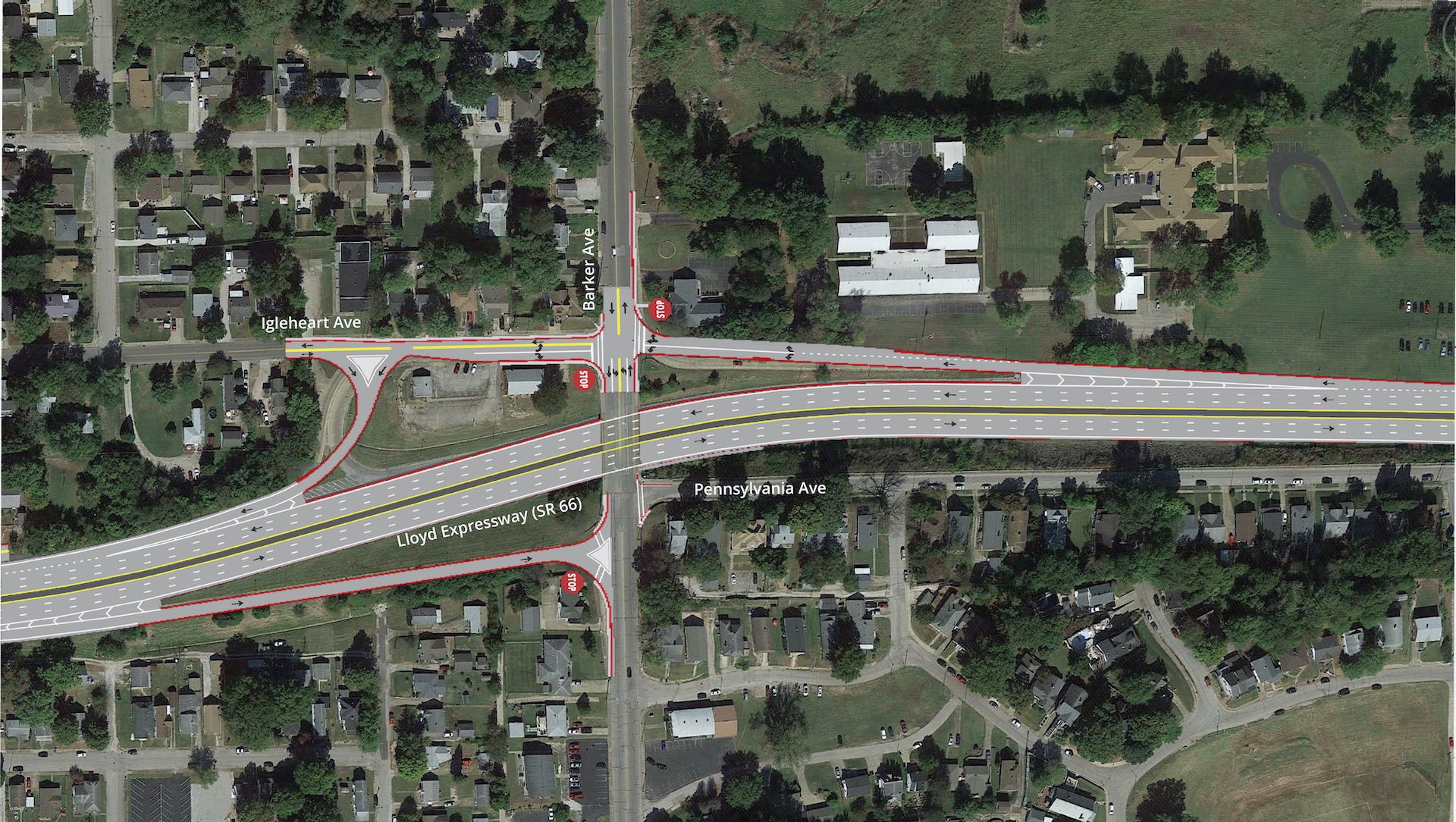
Intersection Modification:
- Close South Barker westbound exit loop ramp
- Add South Barker traffic to North Barker westbound exit ramp
- Realign westbound entrance ramp
- Upgrade eastbound Barker exit ramp
Considerations:
- Reconfigure ramps to improve safety
This design concept is preliminary and subject to change.

